Thrane and Thrane A S RT5020 VHF Marine Radiotelephone User Manual B5022GB 1 pmd
Thrane & Thrane A/S VHF Marine Radiotelephone B5022GB 1 pmd
User manual
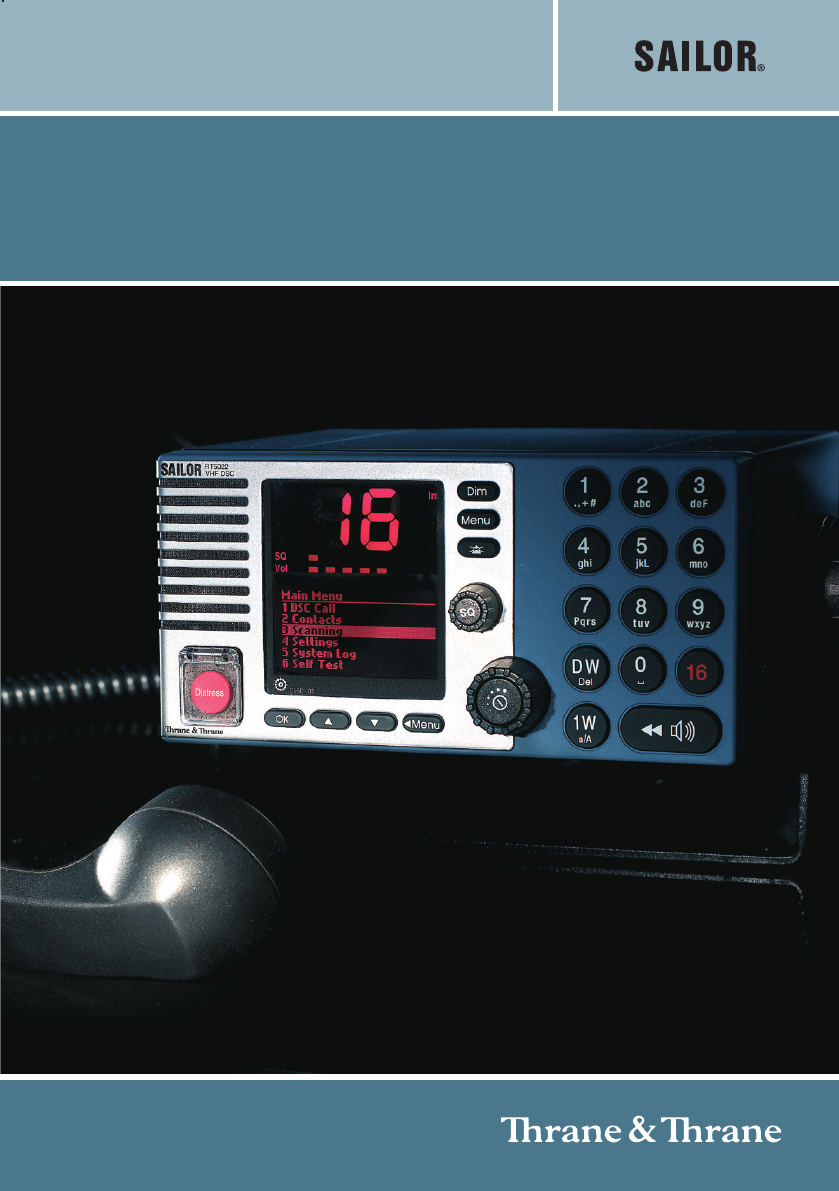
SAILOR RT5022 VHF DSC
SAILOR RT5020 VHF DSC Duplex
OPERATION MANUAL
Introduction
Congratulations on your new SAILOR RT5022/RT5020 VHF.
SAILOR marine equipment is specially designed for the extremely rugged conditions on
board a ship, based on more than 50 years of experience with all kinds of vessels, from
small pleasure crafts, over fishing vessels working under all climatic conditions, to the
biggest ships.
SAILOR ® is one of Europe’s leading manufacturers of maritime radio communication
equipment - a position which has been maintained by means of constant and extensive
product development. We have a worldwide network of distributors with general agencies in
more than 80 countries. All our distributors are specially trained to service all your SAILOR ®
products.
About this manual
This manual is for the daily user of the system. Additionally, it includes a section on the
installation procedures, and - on page iii - standard distress procedures. We highly recom-
mend you to read the manual before you start using the equipment.
Notice: There may be some minor differences in the graphic layout of the product in the
manual compared to the actual physical unit.
Abbreviations used in this manual
ADDR Address
BI Channel mode when sailing on European rivers
BQ DSC Call Acknowledgement Reply
CU Control Unit
DSC Digital Selective Calling
DW Dual Watch
EOS DSC End Of Sequence
GMDSS Global Maritime Distress and Safety System
MMSI Maritime Mobile Service Identification
PTT “Push To Talk” button
RQ DSC Call Acknowledgement Request
RX Receive/r
SQ Squelch
TX Transmit/ter
UTC Coordinated Universal Time
Please note
Any responsibility or liability for loss or damage in connection with the use of this product and
the accompanying documentation is disclaimed. The information in this manual is provided
for information purposes only, is subject to change without notice, may contain errors or
inaccuracies, and represents no commitment whatsoever. This agreement is governed by
the laws of Denmark.
Doc. No.: B5022GB0 Issue: F/0549
ii
iii
0549
Training Information
The Thrane & Thrane RT5022/RT5020 VHF radio is designed for “occupational use only”
and is also classified as such.
It must only be used in the course of employment by individuals aware of both the hazards
as well as the way to minimize those hazards.
The radio is thus NOT intended for use in an uncontrolled environment by general public.
The RT5022/RT5020 has been tested and complies with the FCC RF exposure limits for
“Occupational Use Only”. The radio also complies with the following guidelines and
standards regarding RF energy and electromagnetic energy levels including the
recommended levels for human exposure:
•FCC OET Bulletin 65 Supplement C, evaluating compliance with FCC guidelines for
human exposure to radio frequency electromagnetic fields
•
American National Standards Institute (C95.1) IEEE standard for safety levels with
respect to human exposure to radio frequency electromagnetic fields, 3 kHz to 300 GHz
•American National Standards Institute (C95.3) IEEE recommended practice for the
measurement of potentially hazardous electromagnetic fields – RF and microwaves
Below the RF exposure hazards and instructions in safe operation of the radio within the
FCC RF exposure limits established for it are described.
Warning:
Your Thrane & Thrane radio set generates electromagnetic RF (radio frequency) energy
when it is transmitting. To ensure that you and those around you are not exposed to
excessive amounts of that energy (beyond FCC allowable limits for occupational use) and
thus to avoid health hazards from excessive exposure to RF energy, FCC OET bulletin 65
establishes an Maximum Permissible Exposure (MPE) radius of 3” (0.9m) for the maximum
power of your radio (25W selected) with an half wave omni-directional antenna having a
maximum gain of 3 dB (5.2dBi). This means all persons must be at least 3” (0.9m) away from
the antenna when the radio is transmitting.
Installation:
1. An omni-directional antenna with a maximum power gain of 5.2 dBi must be mounted at
least 9.6” (2.9m) above the highest deck where people may be staying during radio
transmissions. The distance is to be measured vertically from the lowest point of the
antenna. This provides the minimum separation distance which is in compliance with RF
exposure requirements and is based on the MPE radius of 3” (0,9m) plus the 6.6” (2m)
height of an adult.
2. On vessels that cannot fulfil requirements in item 1, the antenna must be mounted so
that its lowest point is at least 3” (0.9m) vertically above the heads of people on deck and
all persons must be outside the 3” (0.9m) MPE radius during radio transmission.
•Always mount the antenna at least 3” (0.9m) from possible human access
•Never touch the antenna when transmitting
•Use only authorized T&T accessories
3. If antenna has to be placed in public areas or near people with no awareness of the radio
transmission, the antenna must be placed at a distance not less than 6” (1.8m) from
possible human access.
Failure to observe any of these warnings may cause you or other people to exceed FCC RF
exposure limits or create other dangerous conditions.
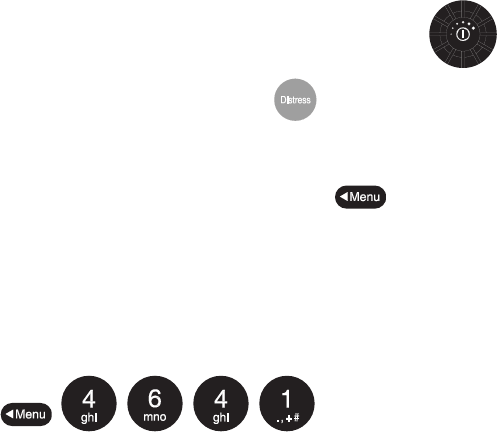
Quick DSC distress call
(only for emergency use)
1. If necessary, switch on by pressing the ON/OFF button
2. Lift up the lid covering the orange key and press for 5 seconds.
3. The Alarm indicator light will flash and will be accompanied by a sound. Distress
message is sent at the continuous tone.
4. Unless stopped manually, by pressing the key or switching the unit off, the
distress call is automatically repeated every 3½-4½ minutes until distress acknowledg-
ment is received.
Wait for distress acknowledgement and start mayday procedure. If an alarm panel is
connected the VHF DISTRESS button on this unit will have the same functionality. All further
handling should continue in front of your main VHF DSC.
NOTE: If needed the default language (English) is obtained by pressing the following keys:
Mayday procedure
When DSC distress acknowledgement is received after you have pressed DISTRESS, or if
you otherwise need to commence distress traffic via radiotelephony on the distress traffic
frequency channel 16, follow this procedure:
• “MAYDAY”,
• “this is”,
• the 9-digit identity
and
the call sign or other identification of the ship,
• the ship’s position in latitude and longitude or other reference to a known geographi
cal location,
• the nature of distress and assistance wanted,
• any other information which might facilitate the rescue.
Upon reception of a DSC distress alert from another ship in distress, you should acknowl-
edge the receipt by radiotelephony on the distress traffic frequency channel 16, by doing the
following:
• “MAYDAY”,
• the 9-digit identity of the ship in distress, repeated 3 times,
“this is”,
• the 9-digit identity or the call sign or other identification of own ship, repeated 3times,
• “RECEIVED MAYDAY”.
0549
iv
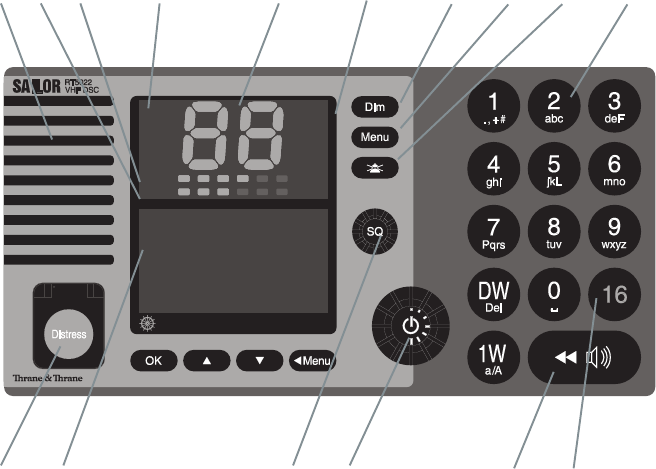
0544
Your VHF at a glance
(RT5020/RT5022)
1. Loudspeaker
2. Volume level indicator
3. Squelch level indicator
4. Indicator lamps. Condition when lit:
1W: 1 watt transmission mode.
Alarm: Alarm call received.
Call: DSC call for you received.
DW: Dual watch mode
5. Telephone display
6. Indicators. Condition when lit:
Tx: Transmitting
Int: International channel system
activated
(Is used when sailing on any sea in the
world except in US waters)
US: US channel system activated
(Is used when sailing in US Waters)
BI: BI channel system activated
(Is used when sailing on the rivers of
Europe)
1 2 3 4 5 6 7 8 9 10
11 12 13 14 15 16
Int
US
BI
Tx
Call
DW
1W
Vol
SQ
Alarm
0191 - 05
7. Dimming button
8. Menu button
9. Mute alerts
10. Keyboard.
11. DISTRESS button (Lid with spring.
Normal push button underneath)
12. Information/Message display
13. Squelch control. Adjust to silent when no
station is received
14. ON/OFF / VOLUME control
15. Replay button
16. Quick-selection key for channel 16.
v
0544

1
0544
Contents
Introduction .............................................................................................................................. ii
About this manual ................................................................................................................ ii
Abbreviations used in this manual ...................................................................................... ii
Training Information ............................................................................................................... iii
Quick DSC distress call.......................................................................................................... iv
Mayday procedure................................................................................................................... iv
Your VHF at a glance (RT5020/RT5022) ................................................................................. v
1 Radio communication in brief .......................................................................................... 3
1.1 Powering VHF ............................................................................................................. 3
1.2 Operating VHF radio communication ......................................................................... 3
1.3 Receiving a call on Channel 16 .................................................................................. 3
1.4 Making a radiotelephone call ...................................................................................... 4
1.5 Speaker volume .......................................................................................................... 4
1.6 Earpiece volume ......................................................................................................... 4
1.7 Squelch ....................................................................................................................... 4
1.8 Channel selection ....................................................................................................... 5
1.9 Dual watch .................................................................................................................. 5
1.10 Replay ......................................................................................................................... 5
1.11 Dimming ...................................................................................................................... 6
1.12 Contrast ....................................................................................................................... 6
2 Basic DSC operations ....................................................................................................... 7
2.1 Menu operation ........................................................................................................... 7
2.2 Receiving a DSC call .................................................................................................. 7
2.3 Transmitting DSC Calls .............................................................................................. 8
2.4 Call a ship station ....................................................................................................... 8
2.5 Call a shore station ..................................................................................................... 8
2.6 Direct call to a PSTN via a coast station.................................................................... 8
2.7 Call a group of ships ................................................................................................... 9
2.8 Create emergency calls .............................................................................................. 9
2.9 DSC call log ................................................................................................................ 9
2.10 Entering your position into the system ....................................................................... 9
3 Your VHF in detail ............................................................................................................ 11
3.1 Abnormal power-down .............................................................................................. 11
3.2 Settings .....................................................................................................................11
3.3 Automatic squelch programming .............................................................................. 11
3.4 Setting channel mode ............................................................................................... 11
3.5 Private channels ....................................................................................................... 12
3.6 Duplex channels ....................................................................................................... 12
3.7 ATIS (inland waterways only) ................................................................................... 13
3.8 Transmitter power ..................................................................................................... 13
3.9 Channel scanning ..................................................................................................... 13
3.10 Creating scan tables ................................................................................................. 14

2
0544
4 DSC operations in detail ................................................................................................. 15
4.1 MMSI Number ........................................................................................................... 15
4.2 Group MMSI number ................................................................................................ 16
4.3 Differentiating incoming calls by ringing tones ........................................................ 16
4.4 Working channel ....................................................................................................... 17
4.5 Contact list ................................................................................................................ 17
4.6 Settings for DSC ....................................................................................................... 19
4.7 Implicit behaviour for operations with DSC .............................................................. 20
4.8 Radio configuration and settings .............................................................................. 22
5 Errors and warnings ........................................................................................................ 24
5.1 System event logging ............................................................................................... 24
5.2 Troubleshooting ........................................................................................................ 24
6 Menu tree .......................................................................................................................... 28
7 Optional functional devices ........................................................................................... 30
7.1 Semi-functional control unit ...................................................................................... 30
7.2 Alarm panel ............................................................................................................... 34
8 Maritime Channels ........................................................................................................... 35
8.2 US channels .............................................................................................................. 36
8.3 BI channels ............................................................................................................... 37
8.4 CA channels .............................................................................................................. 38
9 Installation ........................................................................................................................ 39
9.1 Mounting possibilities ............................................................................................... 39
9.2 Interface connections ............................................................................................... 46
9.3 Power supply ............................................................................................................ 52
9.4 Antenna installation and precautions ....................................................................... 53
10 Technical specifications ................................................................................................. 55
10.1 General information .................................................................................................. 55
10.2 General DSC facilities .............................................................................................. 55
10.3 Specific data for transceiver unit RT5022 ................................................................ 55
10.4 Specific data for transceiver unit RT5020 ................................................................ 56
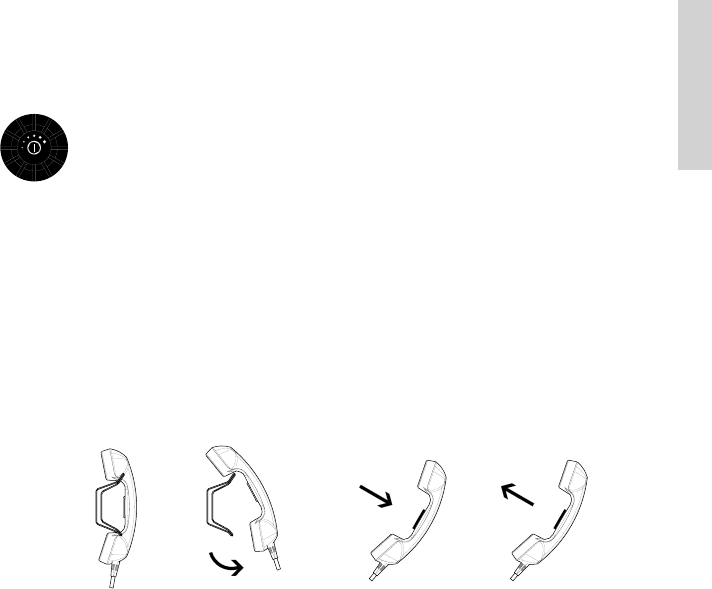
3
Basic
1 Radio communication in brief
1.1 Powering VHF
The VHF is turned on by a single press on the ON/OFF/Volume button. The VHF
is turned off by pressing the ON/OFF/Volume button for 3 seconds.
Always indicated by a count down window in the information display, except if the
radio is powered down in distress mode.
Any connected devices (Alarm Panel, Handset, CUs) will be operational only if
the VHF is powered.
1.2 Operating VHF radio communication
The VHF is operated by means of a handset.
To bring the VHF in transmission mode the handset must be hooked off and the PTT button
on the handset has to be pressed. Transmission is indicated by the lighted TX indicator.
Receive mode is always reached by releasing the PTT button.
PTT
PTT
Press PTT
Release PTT
hooked off
hooked on
HandsetHandset
Transmit and receive is performed on the working channel shown in the telephone display.
If the handset is used with an RT5020 duplex radio, received signal can always be monitored
in the handset earpiece. With the RT5022 simplex/semi-duplex radio the received voice
signal can only be monitored in the earpiece while PTT is released.
1.3 Receiving a call on Channel 16
When you hear your call name in the loudspeaker:
1. Lift the handset.
2. Press the PTT key.
3. Repeat the name of the station calling you and say “This is [your ship’s name].”
4. Suggest a channel other than 16 by saying “Channel [suggested number]”.
5. Say “Over” and release the PTT key
to allow your caller to confirm the suggested new channel.
0544

4
Basic
0544
6. Switch to the new channel – for example, channel 71
– and begin your conversation. Press PTT only when you are talking. If you are on a
simplex channel (in other words, a channel that can carry only one transmission at a
time), always say “Over” just before releasing. With duplex channels (ship-shore
calls), the conversation can be two-way as with a normal land telephone calls.
1.4 Making a radiotelephone call
A radiotelephone call is preferably to be commenced using DSC. Alternatively the following
public calling procedure shall be used:
1. Select channel 16 (by pressing ) or other agreed channel.
2. Lift the handset.
3. Press the PTT key and make your call.
First, say the name of the station
you are calling three times.
Then say “This is [your ship’s name”], again three times.
Finally, say “Over”.
4. Release the PTT key to listen.
5. When answered, agree upon a channel,
switch to that channel – for example, channel 6 – and begin your conversation. Press
PTT only when you are talking. If on a simplex channel (in other words, a channel
that can carry only one transmission at a time), always say “Over” just before
releasing.
1.5 Speaker volume
The volume in the loudspeaker (internal and optional external) is adjusted by turning the
VOLUME control. The volume level is visualized in the telephone display. The volume can be
adjusted to a mute mode by turning the volume control left (down). If the volume is adjusted
to the mute level the VOL LED will flash.
1.6 Earpiece volume
The volume level of the default handset earpiece is adjusted by selecting the Handset
Volume menu (4.3.1).
The and buttons are used to adjust the level. The level is indicated in the
information/message display.
1.7 Squelch
The squelch level is adjusted by using the squelch control. The actual squelch
level is visualized in the telephone display.

5
Basic
1.8 Channel selection
The system is defaulting to channel 16 after a normal power-on.
Channels can be selected using the
(increasing to next valid VHF channel) or
(decreasing channel). Channels can also be entered using the numeric keypad.
The active working channel is always shown in the upper display.
1.9 Dual watch
Dual watch is a mode where the priority channel (16) is scanned periodically for
a signal while listening on a working channel.
Dual watch is activated by pressing the DW button.
The DW indicator is lit while DW is active. Dual watch is deactivated by:
• Pressing DW – Continues to receive on the working channel.
• Pressing PTT – Transmits always on working channel
• Pressing ´16´.
• Pressing Replay - Dual watch is terminated while the message is replayed
and will then be re-invoked
Selecting a new channel while in dual watch mode will continue dual watch on the new
selected working channel, unless a signal is found on channel 16.
1.10 Replay
Replay is a facility built into the product which always will allow the operator to repeat the
latest 90 seconds of received voice data to be replayed in the acoustic devices.
Received voice data is defined when the squelch is open. This means that 90 seconds of
actual traffic could be accumulated over several hours/days.
If the 90 seconds storage limit is reached the oldest data is simply overridden with the
newest received traffic data (FIFO principle).
Activating replay
The front panel has a dedicated replay button.
A push on the replay button will bring up a (replay) window in the
information/message display. Holding down replay will drive a
counter to be updated in the display where it is determined how many
seconds of recorded data is wanted for replay - the last XX seconds
of recorded data.
If pressing the replay button in normal receive mode this will still allow the unit to receive
audio in the speaker system.
0544
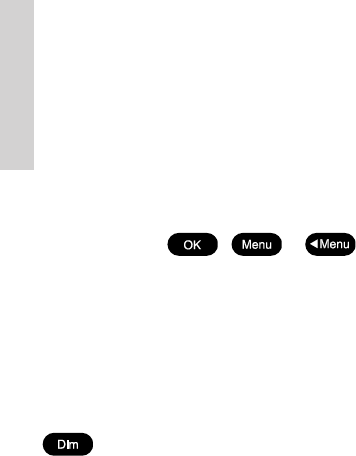
6
Basic
When releasing the replay button the replay function will take over the audio system and
start to replay the last XX seconds of data received on any channel. The time when the traffic
was received and the channel on which it was received is displayed during replay.
Volume control can be used on the replay data to adjust sound pressure in audio devices.
During replay “— —” is shown in the channel display, to indicate that listening on the live
receive signal is disabled in this situation (as well as recording is disabled). If a signal is
received on the working channel while replay is activated, this is indicated in the lower left
corner of the replay window.
Replay is interrupted when:
• Pressing , or
• Pressing PTT
• Receiving any message in the information/message display
Recorded voice data will not survive power-down of any kind
.
1.11 Dimming
To adjust the light intensity the dim button is pressed.
While the dim button is pressed the intensity is changing. Releasing the dim
button will maintain the current light intensity.
A renewed pressing of the dim button will change the direction of the light intensity change.
If the VHF is dimmed to zero, any key press will wake up the light to a minimum visible at
night. Active text in the information/message display might prevent dimming to zero.
It is possible to reduce illumination to zero. If you press a key in this state the light will
illuminate to the lowest illuminated state for 5 seconds, where after it will return to the zero
illumination state. If a message is shown on the screen while dimming is set to zero, the
illumination is adjusted to the lowest nonzero value.
1.12 Contrast
Contrast of the information/message display (and thereby optimizing the vertical viewing
angle) can be adjusted initially by entering the Display Contrast menu. Use the arrows to
adjust contrast. The contrast will be set simultaneously during adjustment.
0544
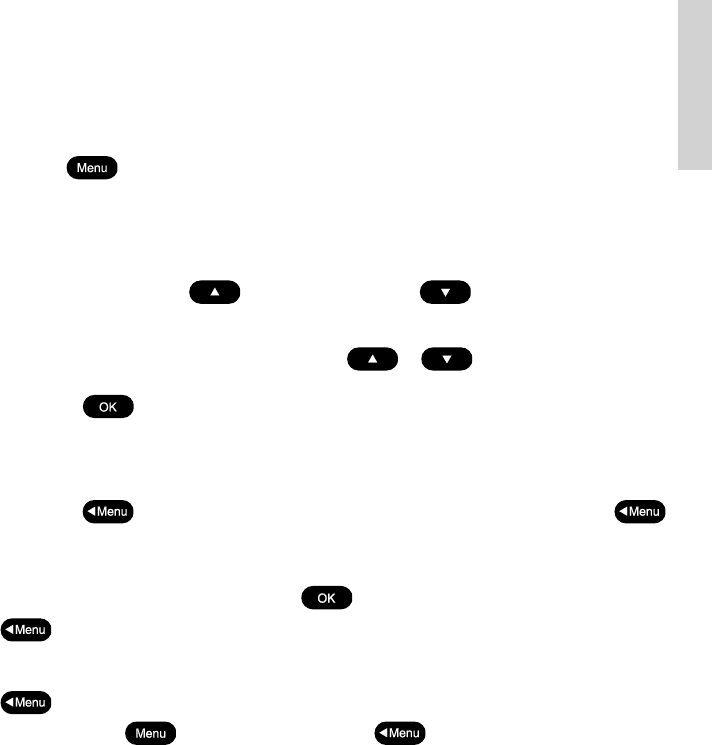
7
Basic
0544
2 Basic DSC operations
When switched on, your VHF automatically monitors channel 70 for incoming DSC calls.
2.1 Menu operation
To operate DSC functionality the menu system is used. The main menu can be activated by
pressing . From the main menu all parts of the menu tree can be reached (see
chapter: Menu tree).
All menus have a unique hierarchical number. The main menu is the only menu which does
not have a number. The number is (to a certain level) displayed in the upper right corner of
the screen. If more than 6 items are available in the menu, arrows will indicate if remaining
items are to found above ( ) current items or below ( ) current displayed menu
items.
The active menu item is highlighted. A press on or will move the focus.
A press on will select the item which is currently in focus.
A press on any of the numeric keys (1 to 9) in a menu will quickly select the menu item
having the corresponding number.
A press on will return to the previous menu window (normally one level up). If
is pressed in the main menu, the menu will be turned off.
Selecting the menus for transmitting DSC calls will lead to a sequence of windows (flows).
The flow sequences are controlled by the (accept and proceed to next window) or
(cancel and return to the previous window) buttons.
Following a menu hierarchy or a window flow might include a guidance text (e.g. “OK/next”
). Certain windows and lists do not show any guidance texts. These windows can
always be left by (jumping to main menu) or (returning to the previous
window).
2.2 Receiving a DSC call
An incoming call will always be recognized by activity on the CALL indicator – and if more
severe (Distress and Urgency calls), also the ALARM indicator. When receiving a DSC call
the message will be displayed immediately in the information/message display, if not
obstructed by any other operations taking place. Received DSC calls will always be accom-
panied by a sound alarm.
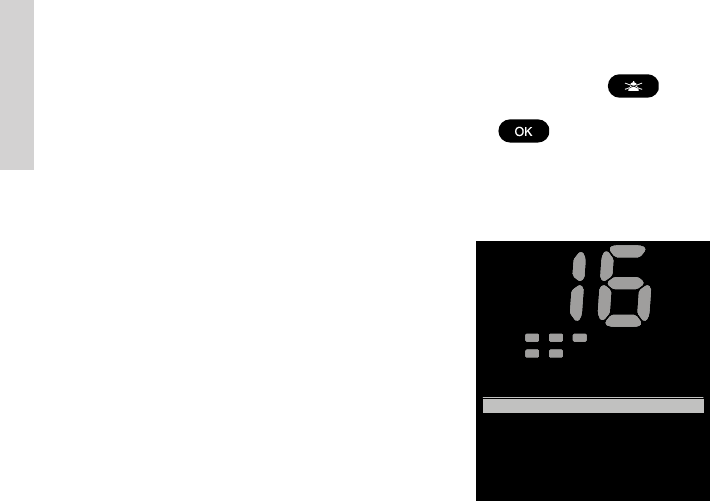
8
Basic
When you receive a call you can read in the display whether the call is addressed to All
Ships, ships in a specific geographic area, a group of ships or to your ship (identified by your
MMSI number) as an individual call.
If you are busy you can choose to handle the call a little later (e.g. by pressing ),
which will stop the alarm sound.
When you are ready to accept the call, lift the handset or press . Your choices
handling the particular call will now appear. Follow the instructions.
If an individual call is received it will not be acknowledged before you accept the call.
2.3 Transmitting DSC Calls
All DSC calls are initiated from the DSC Call Menu (1).
Call
DW
1W
Vol
SQ
Alarm
Int
US
BI
Tx
DSC Call
1
2 PSTN Call
5 DSC Logs
3 Group Call
4 Emergency
1 Station Call
When entering a menu item, you will be guided through
the call construction. For every call generated you will
have the possibility of verifying the call before you
transmit it.
2.4 Call a ship station
To call a ship station and suggest a working channel, enter the Station Call menu (1.1) and
follow the instructions. Have the ships MMSI number ready if it is not available via the
contact list.
Please also refer to Section 4.1.2 for using extended sub-addressing.
2.5 Call a shore station
To call a shore station, enter the Station Call menu (1.1) and follow the instructions. Have the
shore MMSI number (00*) ready if it is not available via the contact list.
2.6 Direct call to a PSTN via a coast station
This kind of calls requires automatic/semi-automatic support from the coast station, and is
available only within some countries. If the service is not available, you will need to make a
simple shore station call and request the connection via radiotelephony.
To make a direct phone call to a PSTN or a mobile phone, enter the direct phone call menu
(1.2) (PSTN Call) and follow the instructions. Have MMSI number (00*) for a reachable shore
station ready if it is not available via the contact list, as well as the public phone number you
would like to request.
2.7 Call a group of ships
To call a group of ships enter the Group Call menu (1.3) and follow the instructions. Have
the group MMSI number (0*) ready if it is not available via the contact list.
0544
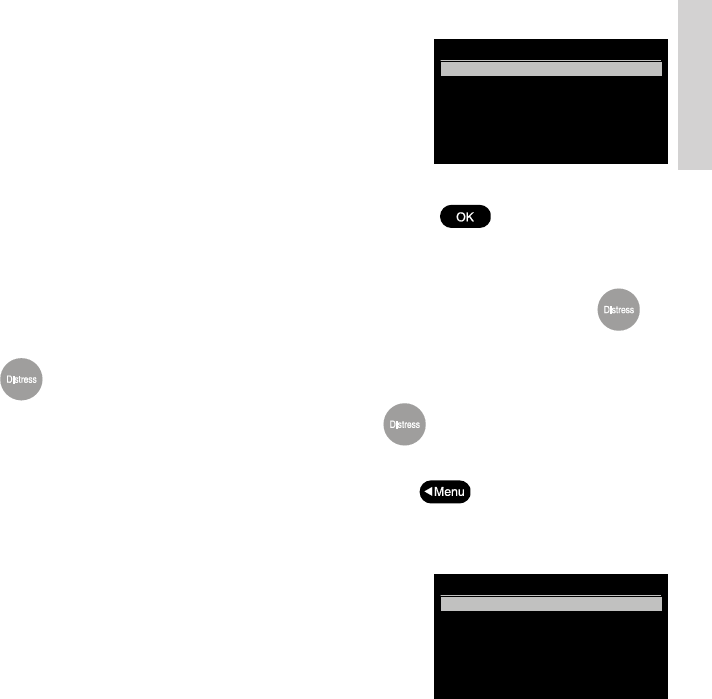
9
Basic
2.8 Create emergency calls
In the category of emergency calls (1.4) you will find the
following menu:
Emergency
1.4
2 Compose Urgency
5 Compose Distress Ack
3 Compose Safety
4 Compose Relays
1 Compose Distress
Transmitting any of these calls should be done with
caution. Please make yourself familiar to the common
procedures for using these calls.
Selecting any of the call types will lead to a call establishing flow with maximum flexibility.
You should make yourself familiar with the flow sequences, but be sure you do not actually
send the message by mistake. In other words, never press the transmit verifica-
tion window if you do not actually intend to send an emergency call.
Designated distress calls are composed entering the menu (1.4.1). From this list the Nature
of Distress is selected. A fast method to reach this selection list is a short press on .
The call completion is then continued from here. If no nature of distress is selected, but
is pressed for 5 seconds, an undesignated distress is sent.
Distress calls are always transmitted by pressing the button for 5 seconds. After you
have transmitted a distress call the VHF is in distress mode (distress call is re-transmitted
once each 3½-4½ minutes). The distress mode can be exited only by reception of the
appropriate distress acknowledgement call or if you press for 5 seconds, or if you
power off the VHF. The VHF will start up in distress mode after a power failure.
2.9 DSC call log
Received and transmitted DSC messages can be found
with details in the DSC Logs (1.5). A special log contains
distress related calls. The call log system will store the
last (20) calls sorted by date and time.
DSC Logs
1.5
2 DSC Receive Log
3 DSC Transmit
1 DSC Distress Log
Each of the logs and each of the calls within the logs
have their own possible actions upon selection
(e.g. printing).
2.10 Entering your position into the system
Ship’s position and the time for this position are essential to the success of a possible rescue
operation. This information is automatically added to a DSC distress call sent from your VHF.
Therefore it is important always to keep this information updated.
Normally a GPS is connected to the VHF. In case of correct installation this will assure
correct updating of position and time.
If your VHF is not connected to an external GPS system, or a malfunction of the GPS
connection is detected by the VHF, the VHF will automatically prompt you to update your
position manually 1 minute after power-up and then every 4 hours. The position and time can
always be entered on your initiative via the Set Position & Time selection in the Settings
menu (4.1.1).
0544

10
Detail
0544
3 Your VHF in detail
3.1 Abnormal power-down
If for any reason the main power disappears for a period less than 10 minutes, the VHF will
be able to turn itself on when power is resumed (without pressing ON/OFF).
If the VHF was abnormally powered down for less than 1 minute, the VHF will start up with
the same settings as before the power failure took place (communication channel, volume,
squelch settings, etc.).
If the abnormal power down lasted more than 1 minute the VHF might start up with the
settings as they were last time the VHF was turned off normally.
3.2 Settings
All volume settings are stored as default during the power off sequence.
3.3 Automatic squelch programming
It is possible to attach a squelch level with each channel if particular noisy channels require
continuous special squelch setting. If a channel is selected squelch level is inherited from
either the global setting or a stored squelch level for that particular channel (default is that all
channels are using the global squelch level).
Storing squelch level on a channel is done while listening on that particular channel:
• Push the button.
• The squelch level is now automatically adjusted to suppress the noise on the
channel. While adjusting, noise is heard. The squelch level indicator follows adjust-
ment, and finally display the required level. The squelch level is memorized on the
channel, indicated by flashing the SQ LED (flashing 3 seconds).
If a channel with a programmed squelch level is selected and the SQUELCH button is turned
the programmed squelch level for that channel is removed (global level).
During Dual Watch or Scanning only the global squelsh level is used (as indicated by the
squelch level indicator). Channel 16 squelch level is not programmable.
All programmed channel squelch levels are stored during power down and restored during
power-up sequence.
0544
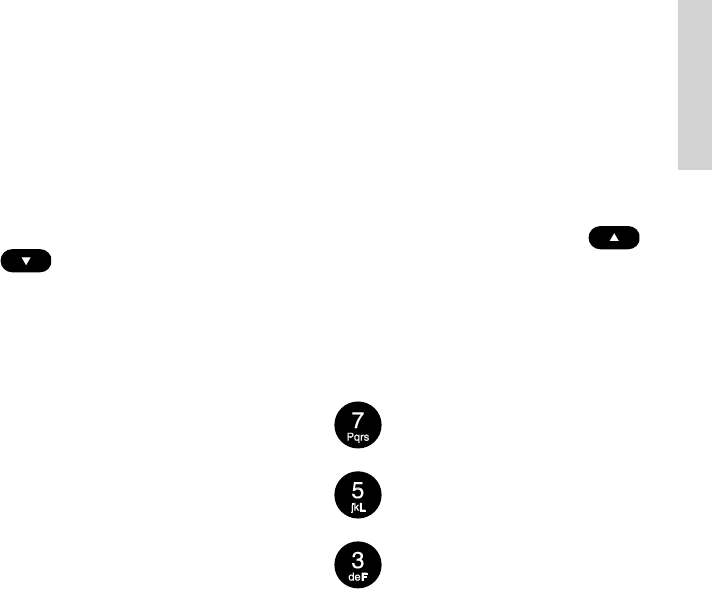
11
Detail
0544
3.4 Setting channel mode
The VHF is delivered from factory with both Int. & US channels enabled for selection from
the operation menu.
Provision of other country regions (channel tables) for selection requires the intervention by
an authorized Sailor representative in order to enable such.
The operator selection of preferred country region (channel table) is done from menu 4.4.1
(channel mode) and the selected country region is indicated in the front panel display (note:
this does not apply to the CA channel table and any custom defined channel tables).
The selected country region is stored during power down sequence.
Using the country region BI (Inland waterways) Dual Watch (DW) and scanning mode are not
available.
3.5 Private channels
Private channels can be defined by using the service interface only (distributor/dealer).
Enabled private channels become valid for selection on the front panel. Using the /
will simply make the private channel number appear above the highest numeric
channel number. 30 (3x10) private channels are available for each enabled channel mode.
Note: In US mode private channels P0-9 will be pre-programmed with the 10 weather
channels. In CA mode, P0-2 is pre-programmed with the 3 regional weather channels.
Private channels can be selected using the numeric key pad:
• Private channels: Long press on followed by a digit (0-9)
• Leisure channels: Long press on followed by a digit (0-9)
• Fisher channels: Long press on followed by a digit (0-9)
Continued activation of the keys ´3´, ´5´ or ´7´ will cause the letters F-, L- or P- respectively
to be displayed.
3.6 Duplex channels
If duplex channels are selected on an RT5022 simplex/semi-duplex radio (see chapter:
Maritime channels) the VHF will operate in semi-duplex mode meaning that the VHF is
operated in simplex mode, but uses two different frequencies to receive and transmit.
If a duplex channel is selected on an RT5020 duplex radio full duplex is supported on these
channels, meaning that both receiver and transmitter is active simultaneously.
0544
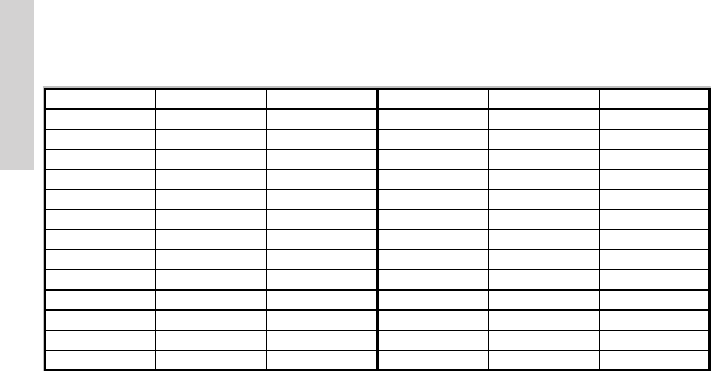
12
Detail
0544
3.7 ATIS (inland waterways only)
ATIS is mandatory to use in inland waterways on e.g. the Rhine. ATIS is a digital data
stream containing ships call sign coded into a DSC-like message, sent over the voice
channel each time the PTT button is released. If PTT is continuously pressed ATIS is
automatically sent each 5 minutes.
ATIS is enabled automatically when BI is selected in menu (4.4.1).
For purpose of operator comfort the received ATIS signal on the active voice channel will be
muted.
The ATIS call sign is programmable from the service interface or from menu 4.4.3. once.
The format of the programmed ATIS code is entered according to the following call sign
prefix conversion table:
Character Phonetic Value Character Phonetic Value
AAl
p
ha 1 N November 14
B Bravo 2 O Oskar 15
C Charlie 3 P Pa
p
a16
D Delta 4 Q Quebec 17
E Echo 5 R Romeo 18
F Foxtrot 6 S Sierra 19
G Golf 7 T Tan
g
o20
H Hotel 8 U Uniform 21
I India 9 V Victor 22
J Juliett 10 W Whiske
y
23
K Kilo 11 X X-ra
y
24
L Lima 12 Y Yankee 25
MMike13 Z Zulu26
I.e. a Dutch (MID-number 244) ship with call sign SP1234, should be programmed with the
following number:
244P1234
with the digit 2 entered as the first digit, and the digit 4 as the last digit.
3.8 Transmitter power
Transmitter output power can always be chosen while the radio is active. Pressing the 1W
button will toggle the transmitter power between low power (below 1W) and high power
(below 25W). The 1W indicator is lit when low power is selected. As a default any channel
shift will cause the transmitter power to be adjusted to the maximum power allowed on that
channel.
0544

13
Detail
0544
3.9 Channel scanning
Scanning is an extension to the dual watch functionality, by which it is possible to watch
multiple channels. It is possible to scan:
• All channels in a sequence
• A number of selected channels in a sequence organized into individual 3 scan tables
- Scan table A, B and C.
The scan type can be selected from the Scanning menu (3). The DW indicator is lit as well
(because the priority channel 16 by default is included in any scan table).
During the scan “SC” is shown in the upper display.
If an active signal is found on a channel different from channel 16 the radio remains on that
channel for 4 seconds (but still respecting dual watch requirements), where after scanning is
resumed. The telephone display is displaying the active channel.
If an active signal is found on channel 16, the VHF is locked on channel 16 until the signal
disappears, where after scanning is resumed. The telephone display is displaying the active
channel (16).
While the active scanning window is visible, scanning can be terminated by:
• Lifting the handset off the hook
• Pressing ´16´ - Channel 16 is used as working channel
• Pressing DISTRESS – Initiates DSC distress
• Pressing – Working channel is used as before scanning was entered
(regardless of carrier state).
• Pressing Replay - Message is replayed
• Pressing any numeric key - Normal channel entry
If scanning is terminated while no active signal was found, the VHF will receive on the
working channel (as it was before scanning was initiated).
If scanning is terminated (handset hook-off) while an active signal is received, the VHF will
operate on this channel after termination.
3.10 Creating scan tables
The scanning tables are user configurable. Creating or editing a scanning table by organizing
a subset of channels (e.g. Table A) for scanning is done by selecting the Edit Scan Table A
entry (3.5.1).
Private channels (non-numeric identifiers – P, F or L) can be part of a channel table. The
number of channels in a scan table is limited to 16.
3 scan tables (A,B & C) can be defined for each enabled channel mode.
Scanning tables are stored during the power-down sequence.
0544

14
Detail
0544
4 DSC operations in detail
4.1 MMSI Number
To operate VHF with DSC the equipment needs to be configured with your vessel’s MMSI
number. If not configured before installation, the VHF will inform you to program the 9-digit
MMSI number at start-up.
The vessel’s MMSI number is programmable from the DSC menu (4.5). It can be pro-
grammed only once from this menu after which changing of the programmed MMSI will be
possible only through the service interface.
If the MMSI number has been programmed correctly, the number is displayed in the default
idle display after start-up.
4.1.1 Sub-Addressed MMSI
The VHF supports setting the 10th digit of the MMSI number to a non-zero value. This is to
be used for being able to individually address multiple VHF’s on board a single vessel (with
the same 9-digit MMSI).
The 10th digit of the MMSI number can be programmed by the operator. After programming
the vessel MMSI number the 10th digit will always be set to 0.
Programming the 10th bit is done via the menu (4.5.6.1)
If the unit is configured to a non-zero X10 value, it will only respond to received individual
routine calls matching all 10 digits in the MMSI number. Transmitted routine calls or acknowl-
edgements to individual routine calls are using the self-ID with non-zero digit 10.
If X10 is programmed to zero the unit reaction modes, if receiving an individual call with non-
zero X10 in the address or self-ID, can be selected using the menu (4.5.6.2).
Selecting 1 Acknowledge non-zero, the unit will receive the call. A call acknowledgement
will be returned to exactly the same address as received in the self-ID (default after program-
ming the MMSI number).
Selecting 2 Acknowledge zero, the unit will receive the call. A call acknowledgement will be
returned to address as received in the self-ID, but with X10 set to zero.
Selecting 3 Reject call, will ignore the received call.
4.1.2 Using extended sub-address in a calling sequence
Entering the station call menu (1.1) allows you to address an RT call request to another radio
supporting the extended address format. If the receiver MMSI is not a coast station (00*), it is
possible to enter either 9 or 10 digits in the Enter Receiver MMSI window. Entering 9 digits
will automatically set the 10th digit to zero for the receiver address.
All other call flows than RT station call requests to a ship station are not supporting this
feature.
It is possible to create entries in the contact list with 9 or 10 digit MMSI numbers, unless they
are group station (0*) or coast station (00*) numbers.
0544
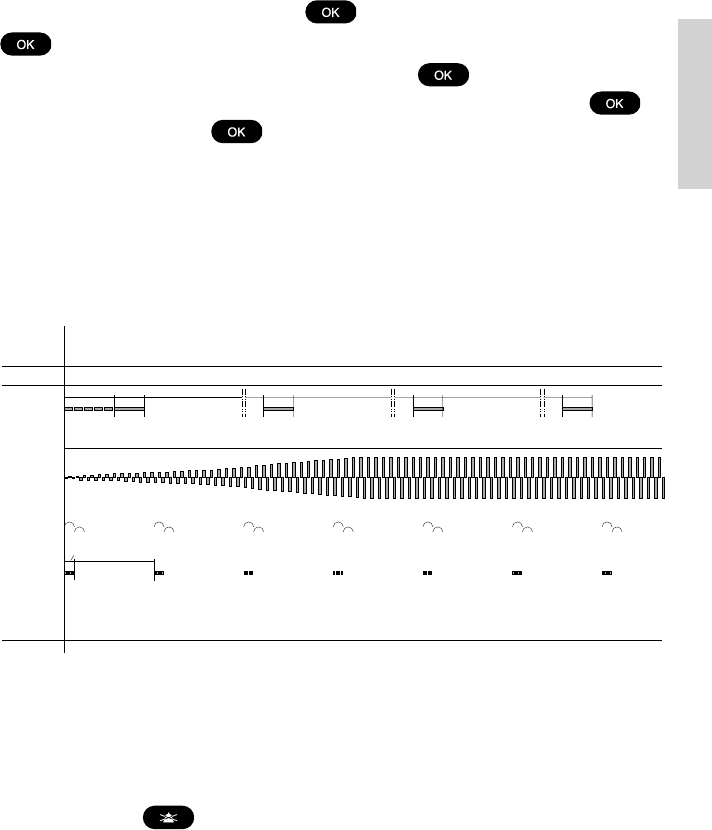
15
Detail
0544
4.2 Group MMSI number
If your radio is configured as member of a group(s) it will receive group calls to that group.
The VHF can be configured to be part of (up to 10) groups. The group MMSI numbers can
be programmed from menu 4.5.2.
The configured group numbers are shown as a list. You can add a group MMSI number by
selecting the <empty> list entry and press . Enter a valid group MMSI and press
.
A group number can be changed by selecting the number , edit the number and press
OK. A group number can be removed from the list by selecting the number, press ,
delete the number and press .
4.3 Differentiating incoming calls by ringing
tones
Your VHF rings in various ways according to the nature of the call, as shown in the following
diagram:
60 sec.
1 sec.
8 sec.
3 sec.
5 sec.
3 1/2 - 4 1/2 min
3 sec.
3 1/2 - 4 1/2 min
3 sec.
3 1/2 - 4 1/2 min
3 sec.
DISTRESS
&
URGENCY
TONE SIGNAL
39717
CALLS
SAFETY
TRANSMIT
DISTRESS
PSTN
ROUTINE &
Tx Tx Tx Tx
If an individual call acknowledgement is received, an alarm tone is activated that is equal to
the alarm tone used for receiving a call request of the same type.
Calls that are not received as distress calls or calls with category distress or urgency will
always engage the prescribed alarm sound. For any other DSC calls the call sound on
reception can be enabled/disabled from a Setup menu (4.3.2).
If you receive a call with an alarm sound, you will always be able to mute the alarm by
pressing the button to be able to finish current radiotelephony call. This procedure
will not affect the actual call accept procedure.
0544

16
Detail
0544
4.4 Working channel
A working channel will always be suggested by the system if a ship station or group is called
for a routine call. The working channel is suggested by using the following procedure:
1. Select a random channel from the list of simplex channels
2. Scan channel for traffic (open squelch)
3. If the channel is free suggest the channel.
4. If the channel is busy restart from 1.
If no channels are found to be free within 1 second no channel is suggested.
4.5 Contact list
The contact list or phone book can contain up to 200 entries.
Each entry might contain:
• Station-, group-, coast station- or public name
• Station MMSI, group MMSI, coast MMSI and/or public phone number
The contact list can be reached from the
Contacts menu (2).
Contacts
2
2 Show Contact
3 Add Contact
4 Edit Contact
5 Delete Contact
1 Call Contact
4.5.1 Calling a contact
It is possible to initiate the following calls from the Call Contact menu item (2.1):
• Individual station (ships or coast) routine radiotelephony calls
• Group routine calls
• Direct dial phone calls to a PSTN phone
Entering the Call Contact menu item will bring up a list of possible names to select. The
name list is sorted alphabetically. The alphanumeric keypad can be used for quick search on
the first letter in the contact name (using wheel mode). Selecting a contact will show data for
the contact in question. Example:
Call Contact
Name:
Peters Oil
MMSI: 003456789
PSTN no: 0045 68098765
When is pressed the appropriate call generator
will be initialized, based on the data.
If a PSTN number exists for the selected contact the PSTN call flow is initiated. Therefore it
is important the corresponding MMSI number for that contact being a coast station number.
If only an MMSI number is present for the contact, a ship station, group or coast station call
is initiated:
0544
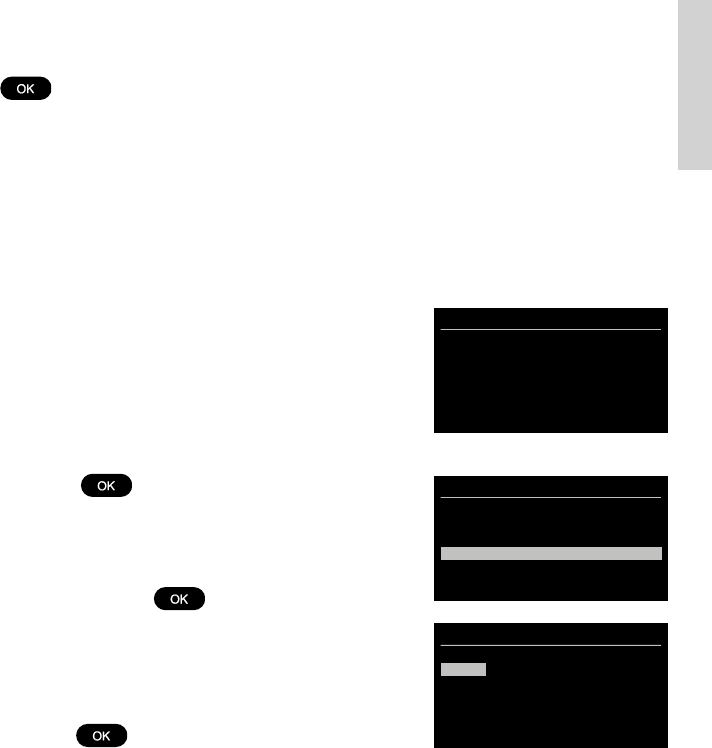
17
Detail
05440544
• If the MMSI number is a group number, the group call flow is entered from the
window where a channel is selected.
• If a ship station number MMSI is available, the station call flow is entered from the
window where a channel is selected.
• If the MMSI number is a coast station, the operator will be led to the transmit
verification window for a station call.
4.5.1.1 Using the Contact list from the Call Sequences
Any call initiated from the DSC call menu that needs an MMSI number or PSTN number,
might search and use that number from the Contact list. If “Search for Contact” is selected
from anywhere in a call flow the contact search list is entered. Selecting the contact with
will return to the corresponding MMSI/PSTN entry window in the call flow with the
selected number information pre-filled.
4.5.2 Show contact
Via the menu item 2.2. it is possible to search for a contact’s information without changing or
initiate anything.
4.5.3 Adding a new contact
If you want to add a new contact to your list, go into menu item 2.3. The following empty
contact window will appear:
Add Contact
Name:
MMSI:
PSTN:
Save contact
The focus bar is used to control what field the operator
wants to put information into.
Example if is pressed:
Add Contact
Name:
Anders Fisker
After having pressed the contact information
looks as follows:
Add Contact
Name: Anders Fisker
PSTN:
Save contact
MMSI:
Proceed with the necessary data entries.
When finished move the focus bar to “Save contact”
and press .
As a minimum a contact name and a valid MMSI number
must be entered. If a PSTN number is entered the MMSI
number for that contact must be a valid coast station
MMSI number (00*).

18
Detail
05440544
See also Section 4.1.2
4.5.4 Editing the contact list
Any contacts from the list can be edited using a similar principle as described above using
menu item 2.4.
4.5.5 Deleting a Contact Entry
Any contact can be deleted from the contact list. If menu 2.5 is selected the contact can be
searched for in the list. When found and selected with the contact will be removed
from the contact list.
4.6 Settings for DSC
The following sections describe the settings that can be applied to different call types.
4.6.1 Special calls
The VHF is capable of supporting transmission of All Ships DSC urgency messages with
second tele-commands:
• Medical transports
• Ships and Aircrafts
These settings can be changed only from the service interface. Reception of these calls is
always possible.
If the VHF is configured for using these calls it will work in the following way:
• After powering up (normally) the VHF it will not be possible to use these call types
(message: “Call type not enabled in VHF” if selected.)
• Each of the call types can be enabled via the menu 4.5.3. (the filled square indicates
the call type that is enabled).
• After enabling the call property can be added in an All Ships Urgency call sequence.
4.6.2 Automatic acknowledgement
The VHF can be set to automatic acknowledgement of the following calls:
• Safety position requests - Default disabled after power-up
• Safety test requests - Default enabled after power-up
• Routine polling requests - Default enabled after power-up
After power-up the behavior can be changed from menu 4.5.4.
The automatic acknowledgement (if enabled) will take place without informing the operator.
The calls are stored in the receive/transmit log. The operator might experience a short
interruption in functionality while the automatic acknowledgement takes place (e.g. scanning,
dual watch).

19
Detail
0544
4.6.3 Automatic channel shift
The VHF can be set to automatically changing the working channel on receipt of the
following call types:
• Individual radiotelephony acknowledgement with a valid channel information
• Radiotelephony group calls with valid channel information
• Radiotelephony all ship safety calls with valid channel information
The set-up is done via menu 4.5.5. The setting will survive powering off the product.
If enabled, a received call will start the (normally) periodic alarm only once. The channel will
switch immediately after and the window is closed.
The automatic channel shift is overruled (turned to manual acknowledgement - requiring
press on OK or a hook-on to hook-off transition) if:
• Any handset is hooked off
• The received call cannot currently be presented on the information display (due to
priority)
Distress calls and all ship calls with category distress or urgency will alert continuously until
manually handled from the front panel.
4.7 Implicit behaviour for operations with DSC
This section describes assumptions and decisions made that are critical for correct function-
ality, but might be hidden to the operator in the display.
4.7.1 DSC transmission
All DSC calls are transmitted on channel 70 with a transmitter power of 25W. Distress,
urgency and non-test safety calls are always transmitted. Other calls are sent only if the
radio is not already recognizing a DSC message on channel 70.
4.7.2 Transmitting undesignated distress
Undesignated distress (solely created using the DISTRESS button) does not show any
message prior to the actual transmission. The following message will be sent:
Format specifier: Distress (112)
Self-Id: <Your MMSI number>
Nature of distress: Undesignated (107)
Distress coordinates: Automatically inserted if position is available (e.g. from GPS),
otherwise unknown (9999999999)
Time of position: Automatically inserted if time of position is available (e.g. from GPS),
otherwise unknown (8888)
Subsequent communication: 100
EOS: 127
0544

20
Detail
0544
4.7.3 Verification of a DSC call before transmission
The final step in each DSC call sequence is the verification window, in which it is possible to
verify the call you are about to transmit. The VHF will by default display only information that
you could influence in the call setup. Example:
Transmit Station Call
MMSI: 001234567
OK/send
<Menu/back
What is hidden to the user is that calls are formed
according to the specifications ITU R.493-11.
For the example call (an individual station call request)
the following information is not shown to the user:
•1
st tele-command: F3E/G3E Simplex TP
• EOS: Acknowledgement request (RQ = 117)
For all radiotelephony calls transmitted to all ships or to a group of ships:
• EOS: End Of Call (127)
Transmitted acknowledgement calls are not shown in any verification window before
transmission. The acknowledgement of any received individual call request will be according
to ITU R.493-11. The manipulation of the received call will be:
• Self-ID in the received call is used as address in the transmitted call
• Address in the received call is used as self-ID in the transmitted call
• EOS: Acknowledgement (BQ = 122)
•1
st tele-command might be changed to “Unable to Comply” (104) on operator’s
request, stating the selected reason.
For all received or transmitted calls the full information can be retrieved from the DSC log.
4.7.4 Receiving DSC calls with errors
Distress calls will have an importance that high that even if they are received with errors they
will, as far as possible, be received and displayed on the screen. If a call is received with
errors this will be indicated with a “receive error” (REC ERR) marking next to the heading of
the call. In this case the full integrity of the data is not to be trusted, and the handling
possibilities (e.g. relaying the call with direct use of the received data) are limited by the
equipment.
4.7.5 Priority of DSC versus VHF
If a situation occurs where there is a conflict between the VHF and the DSC functionality (for
instance voice transmission on a working channel – using PTT, simultaneously with trans-
mission of a DSC call), the DSC transmission will be prioritized. As a consequence the
following VHF functions may need to be re-initiated if the DSC activity has occurred while
these were active:
• Replay
• Scanning
• Dual watch
• PTT
A normal received DSC call request will appear on the screen as soon it is recognized on
channel 70. This will not affect VHF radiotelephony before OK is pressed, unless automatic
channel shift has been configureded (See chapter: Automatic channel shift:)
0544

21
Detail
0544
4.8 Radio configuration and settings
This section describes the configuration and settings possible to control from the operator
front panel and this is not described elsewhere in this manual.
If your equipment needs configuration beyond these possibilities, you must call you dealer
for special support.
4.8.1 Idle display
Whenever the radio is left in a state where the information/message display is not in use
(pure radio communication mode), the information display will return to idle or stand-by
mode. This will also be the case if the unit was left in a simple menu for 10 minutes.
The required and preferred default idle display is the one where position and time stored for
DSC operation are shown along with the ship’s identity (9-digit MMSI). This mode will always
appear after start-up. The user might change the default display to be blank (zero illumination
to minimize disturbance at night). To use this mode menu (4.6.3) select Idle Display .
Pressing OK will toggle the blank display to be used.
If the blank display is selected for idle display, and the radio goes into activity mode, the idle
mode will just leave the screen blank. To display the position and identity information quickly
in this mode you can press the on/off button for a short time. This will show the information
screen for 15 seconds before it turns off.
4.8.2 Notations for date and time
On the idle display and when the UTC radio time needs to be manually updated the notation
for time entry is:
• yyyy/mm/dd hh:mm
In all logs (DSC logs and system logs)
• dd/mm hh:mm (in overview list)
• dd/mm-yy hh:mm:ss (in detail log descriptions)
The above notations are in force regardless of conventions that might traditionally be used in
languages other than English.
4.8.3 Language
The RT5022/RT5020 is pre-programmed with a number of language packages. It is possible
to change the overall text in the information/text display to a language different from the
default language (English), by selecting the appropriate language in the Language menu
(4.6.4). Only the languages shown in this menu are supported. New languages can only be
distributed along with official software updates.
The RT5022/RT5020 is approved with the default language. Therefore the following mode of
operation is implemented:
0544
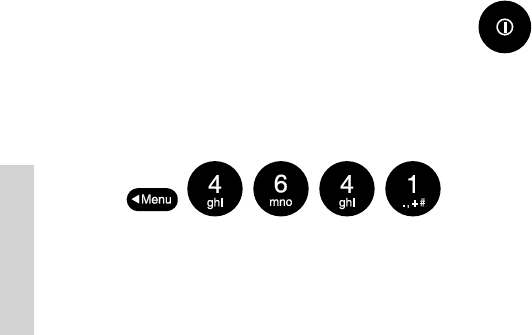
22
Detail
0544
• If the product is turned off and on normally using the button, the
default language will always be selected, regardless of the language mode before
power-off.
• The following sequence will always put the unit back in default language mode
(except when in distress state):
Technical abbreviations, such as, the four points of the compass (N, S, E and W), DSC
symbol notations (Ack. RQ, Ack. BQ and EOS), etc. is attempted to be maintained as in the
default language.
4.8.4 Privacy talk mode
It is possible to configure the radio to be used for a certain level of privacy. Privacy mode is
only effective if the system is installed with CU5000 remote CU units.
In privacy mode all received voice (speaker and earpiece) will be muted to the CU5000
remote units when the handset is lifted on the transceiver (“OC” is displayed IN CU5000
display).
An incoming alarm sound will overrule privacy mode.
Privacy mode is enabled/disabled via menu 4.3.3.
0544
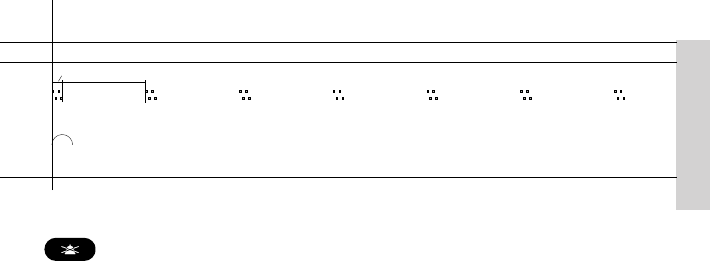
23
Detail
0544
5 Errors and warnings
Errors and warnings are shown in the display accompanied by the sounds shown in the
figure below:
1 sec.
8 sec.
WARNING
& INFO
TONE SIGNAL
ERRORS
39718
If you receive an error or warning message you will always be able to shut off the alarm.
Press to finish on-going radiotelephony. This procedure will not affect the actual
read-out and accept procedure for errors and warnings.
Errors and warning messages are shown in the information display. Examples of a warning
can be a reminder to enter position manually each 4 hours, or that the GPS signal suddently
is missing.
5.1 System event logging
Errors received as pop-up and information windows shall be logged in the event logging
system for later read out. The error logs are accessed from menu (5.1).
From menu 5.2 at least the following statistics are available:
• On time (<xxxx>d <yy>h <zz>m)
• Number of power failures
• Number of missing GPS situations
• Number of Tx activations
• Number of transmitted DSC calls
The information is read only on the front panel. Counters can be reset only from the service
interface
5.2 Troubleshooting
If you doubt that your VHF system works properly, it is of great importance that you find the
reason and assure that the equipment is properly serviced if any of the devices are failing.
You should contact your authorized dealer for tecnical support of your equipment. But, before
you do that you can go through a list of actions to fix the problem by yourself and save time.
0544
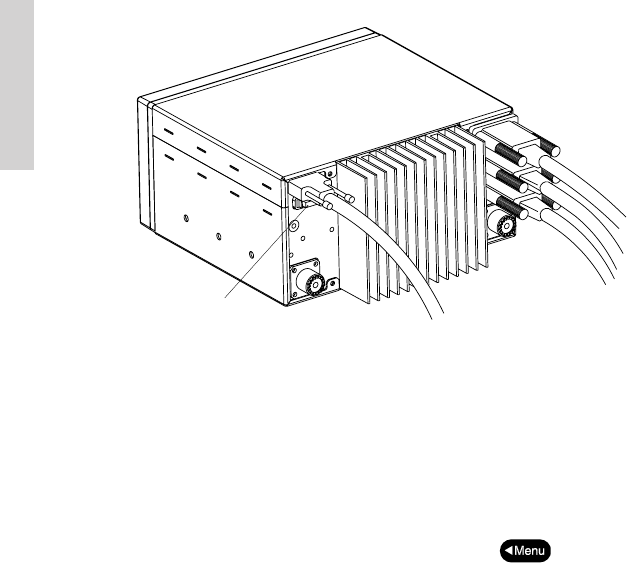
24
Detail
0544
5.2.1.1 Ship power
In some installations ship power might occasionally disappear for a short time, e.g. if
switching between land power or generator power. Your equipment will shut down immedi-
ately when power is failing. If the power does not arrive within 10 minutes the radio cannot be
expected to start up automatically.
5.2.1.2 Fuses
If a press on the ON/OFF button does not turn on the radio, and ship power is present, a fuse
might need replacement. The main fuse is located on the rear side of the radio. The shield is
removed and the fuse is simply replaced with a new one.
Fuse 15A Auto
5.2.2 Self-test
Symptom: Radio operation is difficult.
It is possible to make a self-test of the equipment user interface. Any entry means and
readouts can be verified in the self test. The test is executed from menu 6.
If any of the following tests are failing you should contact your authorized dealer for service.
5.2.2.1 Key test
All push buttons can be checked using the self-test in menu 6.1. Pressing or releasing any
key on the front panel will be echoed in the graphic display. Only exception is DISTRESS
and ON/OFF - which will maintain their functionality. These buttons can be pressed periodi-
cally for a short time to check that they are functional. Pressing twice will exit the
test.
5.2.2.2 Display test
The information/message display is an LCD screen. A test of all pixels in the screen is
executed in menu 6.2. Triangles are shown in the display.
5.2.2.3 LED test
You can verify that all light indicators including the channel display can be lit. Running the
LED test (6.3) will turn on all indicators for 2 seconds, where after these will return to their
previous state.
5.2.2.4 Alarm and Audio Test
Entering this test item (6.4) will route the distress and urgency alarm sound to all speakers
where this alarm is to be heard.
0544

25
Detail
0544
5.2.3 GPS
Sympton: Position requested.
If your radio is connected to a GPS and you receive a request in the display to enter position
and time, then it is possibly that the GPS unit is either turned off, broken or disconnected.
The GPS is connected on the rear side of the radio, either directly to the option connector or
via connection box (see section Interface connections). Please refer to installation section of
this manual for connection details.
Until GPS signal has been restored you must update the position manually as requested by
VHF.
5.2.4 Accessory connection
Symptom: Some or all of the remote units do not work
First turn your VHF off and on. Turn all remote units on, if possible. Check status of the units
by going into the Accessories menu 4.6.2. In this menu you can read the status of any
connected device. If the status is “not found” for a particular device, it cannot be recognized
by your VHF.
The communication to the remote units is taking place via a serial multi-drop bus connection
on the rear side of the radio either directly to the SPARC II connector or via connection box
and/or extension box (see section Interface connections).
If an alarm panel (AP4365) is connected please check there is a light in the red “VHF
DISTRESS” button. If not, fuses in the alarm panel might need replacement before the serial
bus is operational.
Communication problems will not affect the VHF unit functionality.
5.2.5 Device failure
If any of the checks descibed above does not explain or help to solve the problems you have
discovered, the problem might be related to the unit itself. Now you must call the authorized
workshop that will make the necessary repair. When you report that you need service for
your device, you can inform your dealer about the problem you see and give the following
information:
• VHF
• Serial Number - e.g. found via the menu item 4.6.1.2
• Firmware version - reported via menu item 4.6.1.1
0544

26
System
0544
5.2.6 Missing MMSI
Symptom: DSC function is not working.
If you have powered your VHF for the first time it might not have the MMSI number pro-
grammed. You must program the MMSI number before the radio is operational for DSC.
Programming is done via menu item 4.5.1
5.2.7 Radio time
Symptom: DSC logs are sorted with a wrong time stamp, or radio time is not correct.
The problem with a wrong radio time should occur only if the GPS is not connected in the
system. A valid GPS time signal will update the UTC time that is used for time stamping logs
only.
If you have a system without GPS, where you manually update position and time, it is also
required that you enter the radio time - at least right after power-up, if you want to get correct
time stamps on DSC logs. The UTC time is also used as the suggested time each time you
are requested to enter position and time manually (every fourth hour).
5.2.8 Channel not free
5.2.8.1 DSC Channel not free
Symptom: DSC transmission is delayed
DSC calls that are not distress or urgency calls will not be sent if the VHF is in the middle of
decoding a DSC call. The transmission will be delayed until decoding has been finished.
5.2.8.2 Working channel not free
Symptom: No suggested working channel in station call.
In a DSC station call a working channel is suggested. If for some reason a working channel
is not found within 1 second, no channel is suggested. If you see this problem please check
the following:
• Adjust to a higher squelch setting. If the squelch is always open, no free working call
channels will be recognised as occupied.
0544
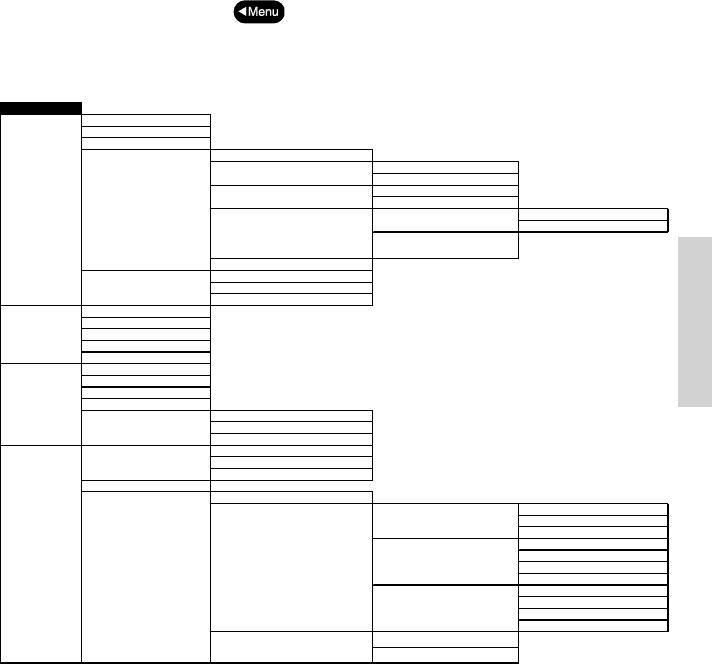
27
System
0544
6 Menu tree
This section lists the full menu tree of the VHF.
The table describes the un-regretted forward flow that is initiated after selection of certain
menu items. Generally, pushing in the menu tree or flow sequence will return to the
previous window.
1.1 Station Call
1.2 PSTN Call
1.3 Grou
p
Call
1.4.1 Com
p
ose Distress
1.4.2 Compose Urgency 1.4.2.1 All Ships
1.4.2.2 Individual
1.4.3 Com
p
ose Safet
y
1.4.3.1 All Shi
p
s
1.4.3.2 Individual
1.4.4 Com
p
ose Rela
y
1.4.4.1 Distre ss Rela
y
1.4.4.1.1 All Shi
p
s
1.4.4.1.2 Individual
1.4.4.2
1.4.5 Com
p
ose Distress Ack
1.5.1 DSC Distress Lo
g
1.5.2 DSC Receive Lo
g
1.5.3 DSC Transm it Lo
g
2.1 Call Contact
2.2 Show Contact
2.3 Add Contact
2.4 Edit Contact
2.5 Delete Contact
3.1 Scan All Channels
3.2 Scan Table A
3.3 Scan Table B
3.4 Scan Table C
3.5 Edit Scan Tables 3.5.1 Scan Table A
3.5.2 Scan Table B
3.5.3 Scan Table C
4Settin
g
s4.1.1 Set Position & Tim e
4.1.2 Set Radio Time
4.1.3 Show Position
4.2 Dis
p
la
y
Contrast
4.3.1 Handset Volume
4.3.2.1 Warnin
g
4.3.2.1.1 Low
4.3.2.1.2
M
e
di
um
4.3.2.1.3 High
4.3.2.2 Routine Call 4.3.2.2.1
M
u
t
e
4.3.2.2.2 Low
4.3.2.2.3
M
e
di
um
4.3.2.2.4 High
4.3.2.3 Safet
y
Call 4.3.2.3.1
M
u
t
e
4.3.2.3.2 Low
4.3.2.3.3
M
e
di
um
4.3.2.3.4 High
4.3.3 Privacy Mode OEnable Priv a c y
ODisable Privacy
MENU
Position & Time4.1
DSC Logs1.5
DSC Call1
1.4 Emergency
Distress Relay Ack
Contacts2
3Scanning
Audio4.3
4.3.2 DSC Alarm Tones
0544
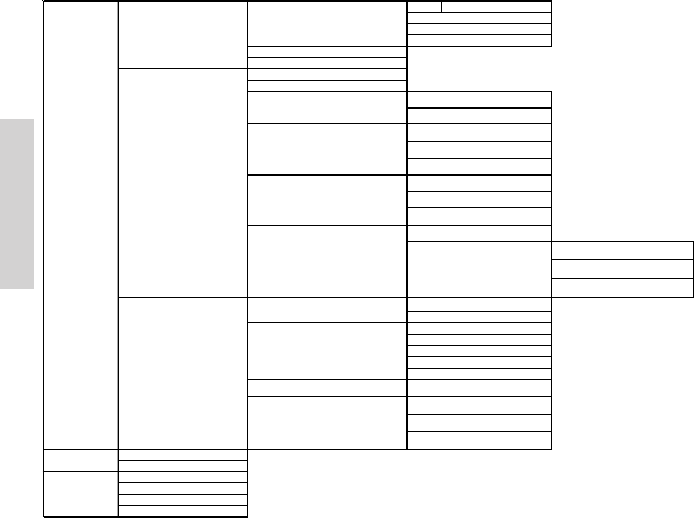
28
Detail
0544
4Settin
gs
4.4.1.1 In t
4.4.1.2 US
4.4.1.3 BI
4.4.1.4 CA N
4.4.2 Channel Info
4.4.3 ATIS Call si
g
n
4.5 DSC 4.5.1 MMSI Num ber
4.5.2 Grou
p
MMSI
4.5.3 Special Calls OMedical Transports
OShips and Aircrafts
4.5.4 Auto Acknowledgement
OSafety Test
ORoutine Polling
OSafety Position
4.5.5 Auto Channel Switch ORT acknow ledgement
OGroup Calls
OAll Ships Saf ety Calls
4.5.6 MMSI Sub-addre ss 4.5.6.1 Value of X10 digit
4.5.6.2 X10=0 mode OAcknowledge Non-zero
OAcknowledge Zero
OReject Call
4.6 System 4.6.1 Device Identification 4.6.1.1
SW Version
4.6.1.2 Serial Number
4.6.2 Accessories 4.6.2.1
A
larm Panel
4.6.2.2 GPS
4.6.2.3 LA N Interface
4.6.2.4 Pr i nt er
4.6.2.5 Optional Handsets
4.6.3 Idle Display OBlank Display
4.6.4 Language OEnglis h
ODansk
OItaliano
5S
y
stem Lo
g
5.1 Errors
5.2 Statistics
6Self Test 6.1 Ke
y
Test
6.2 Dis
p
la
y
Test
6.3 LED Test
6.4 Alarm Test
4.4.1 Channel ModeChannels4.4
0544
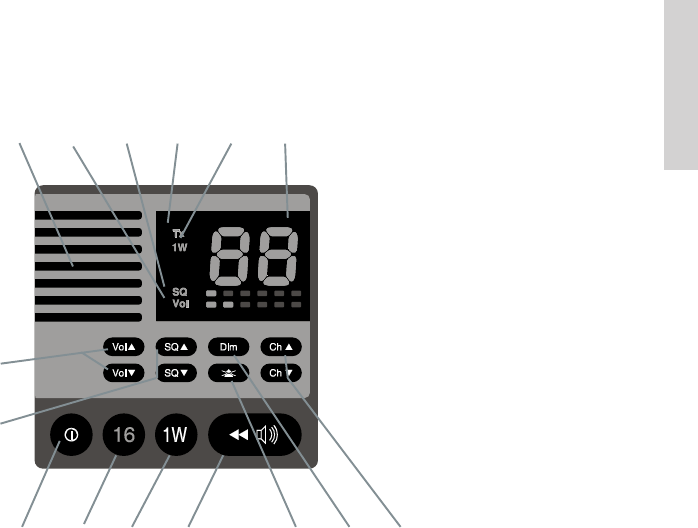
29
System
0544
Optional functional devices
The maximum system configuration possible with your VHF installation with VHF is shown in
the first part of the installation section.
The present chapter will describe the functionality and behaviour of the following optional
functional devices:
• 1 or 2 remote handset control units
• One alarm panel
• Printer + LAN interface + printer server
7.1 Semi-functional control unit
The semi-functional control unit CU5000 is an optional unit connecting an additional remote
handset to the VHF. Installation of control units should be performed only by an authorized
service person.
7.1.1 Controls and indicators
1 2 3 4 5 6
7
8
9 10 11 12 13 14 15
1. Loudspeaker
2. Squelsh level indicator
3. Volume level indicator
4. Tx
5. 1W
6. Display
7 Volume up/down
8. Squelch up/down
9. ON/OFF
10. Quick-select key for channel 16.
11. 1W
12. Replay push button
13 Mute alarm
14. Dimming
15. Channel up/down
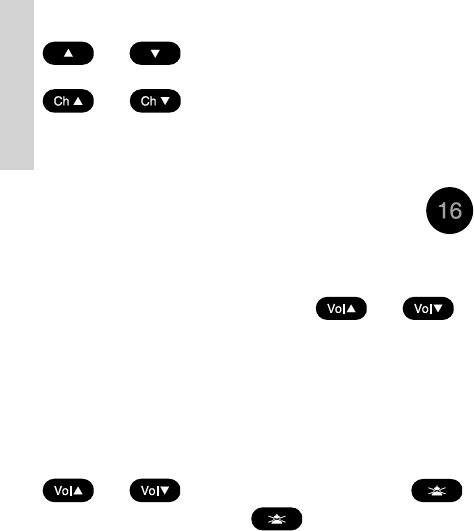
30
System
0544
7.1.2 Operation
The optional handset is intended for VHF radiotelephony only. There will be no DSC
functionality supported except for:
• The functionality or lifting of the CU handset follows the default handset on the main
radio (see Section DSC receive), when receiving a DSC call.
• Possibility to mute DSC alarm sound – not to handle the DSC call.
7.1.3 ON/OFF
The semi-intelligent handset will always be turned off default after VHF unit is powered. The
off state is indicated by no activity or light in the CU.
The unit can be turned on and off (press for 1 second) on the ON button.
If the main unit is powered off the handset control unit is always turned off.
7.1.4 Channel selection
Channel selection is done by using exactly the method as described for VHF by using
and .
On the optional handset control unit these buttons are marked
and respectively.
Channel change requests are sent to the main VHF unit, and the main VHF unit will change
channel and update the CU display. The same channel number will be applied to all the
displays in the system.
A quick channel 16 selection is available by pressing .
7.1.5 Volume
The volume is controlled by using the and buttons.
Pressing these buttons will affect only the internal CU speaker as well as optionally con-
nected external CU speakers. The volume adjustment will be active only for the specific local
handset. Therefore the volume bar on the main VHF unit is not updated during adjustment.
A local volume indicator always shows the speaker volume on the CU. If the volume is
adjusted to the mute level the VOL LED will flash (1 Hz).
The earpiece volume in the handset connected to the CU is adjusted using the
and buttons while holding down the button.
This alternative usage of the button will be possible only when:
• The handset is hooked off, and
• No active alarm sound to be muted
After power-up all volume levels set during the last operation are restored as they were
before power-down.
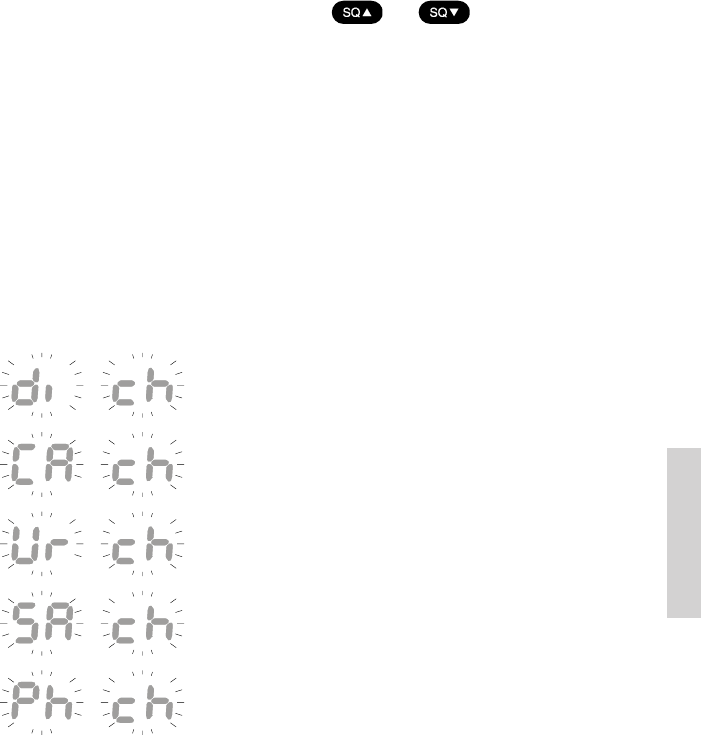
31
Channels
0544
7.1.6 Squelch
The squelch level can be adjusted by using the and buttons.
Pressing the buttons will contribute to the global squelch setting on the radio. Squelch
indicators on the handset CU and on the main unit will always follow each other regardless of
the control input used for adjustment.
NOTE: If a channel is reached where the squelch setting was programmed from the main
unit, usage of the squelch control will set the level for that particular channel, and reset the
squelch programming.
7.1.7 Dimming
Dimming the control unit display and keypad backlight and 1W LED is done exactly as
described for the VHF, but with no graphical information.
7.1.8 Receiving a DSC call
If a DSC call is received the following will show on the CU channel display depending of the
call type:
alternating
...
If an active distress call was received
(changing with 1Hz).
...
If a routine call was received
...
If an urgency call is received.
...
If an safety call is received.
...
If an PSTN call is received.
Normal radiotelephony calls can be acknowledged from the semi-intelligent handset making
the HS hooked to HS un-hooked transition.
If an error or warning occurs the following is displayed:
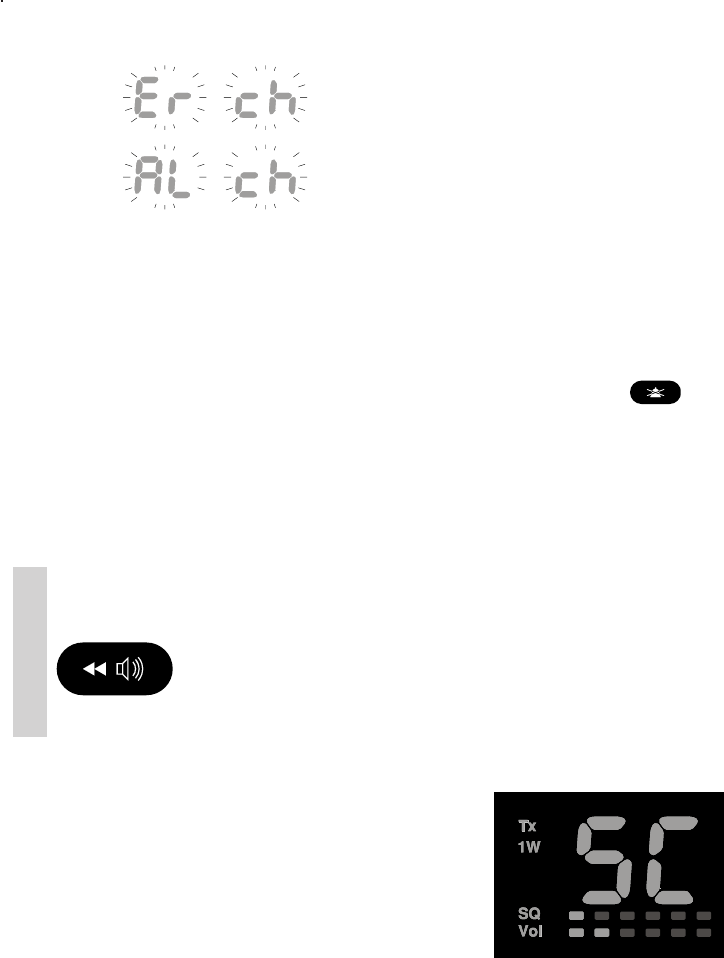
32
Channels
0544
alternating
...
on errors.
...
on alerts.
This indication will remain until the DSC call has been handled from the main unit. Though
normal radiotelephony calls can be acknowledged from the semi-intelligent handset making
the HS hooked to HS un-hooked transition.
7.1.9 Muting alarms
If a DSC call is received (distress or routine) the alarm sound is heard as a mixing of the
received voice audio in the speakers and earpieces in the system. Pressing the
button will mute any alarm sound in the system, and only received voice is heard in the
speakers.
7.1.10 Transmitter power
Pressing the 1W button will have the same effect as described for VHF. 1W LED on CU will
follow the 1W LED on the main unit.
7.1.11 Replay
The replay facility works exactly the same way as described for the main VHF unit when the
button is pressed.
The navigator counter (seconds back in received signal) is shown on the CU display.
7.1.12 Dual watch and scanning
There are no possibilities of controlling dual watch or
scanning. During dual watch initiated from the main
VHF the working channel is displayed in the display.
During scanning the display is indicating this by “SC”.
Locking on any channel will, of course, switch the display
to that channel.
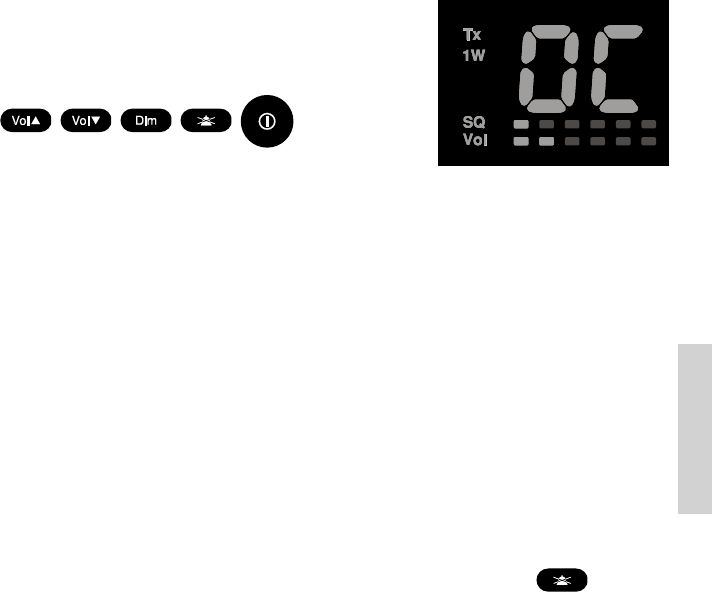
33
Channels
0544
7.1.13 Multiple handsets in the system
If multiple handsets are connected in the system the following priority is given (to PTT –
microphone control) if multiple handsets are lifted:
• The default handset is always given priority if lifted.
• Any optional handset lifted first takes priority over another optional handset.
A warning “OC” is written in the display near any handset (VHF unit or CU) that has lower
priority, as soon the prioritized handset is lifted.
If an optional handset is not given priority (“OC” written
in display) it will be possible to use only the following
buttons on the CU:
7.1.14 Optional handset CU VHF operation while main unit is in
menu or text entry mode
If the main VHF unit is operated in menu or text entry mode, there will be certain buttons on
the VHF main unit that do not respond to their primary functions. Seen from a CU perspec-
tive all functionality is maintained if “OC” is not shown in the telephone display.
7.2 Alarm panel
The alarm panel AP4365 will – if connected correctly to the VHF - be illuminated in the red
“VHF DISTRESS” push button.
7.2.1 Distress initiation
Only undesignated distress can be sent from the alarm panel.
The distress is sent by lifting the lid over the VHF DISTRESS button on the alarm panel and
pressing the button for 5 seconds. A sound is heard each second. After 5 seconds a
constant sound is heard, indicating that you have sent the distress. You can now release the
button. The alarm sound in the alarm panel can be muted by pressing the on the
alarm panel.
The VHF is now in distress mode. You must now continue the distress traffic and procedures
from the front panel of your VHF, if possible. The procedures are now the same as described
for handling distress mode from the main unit.Maritime channels
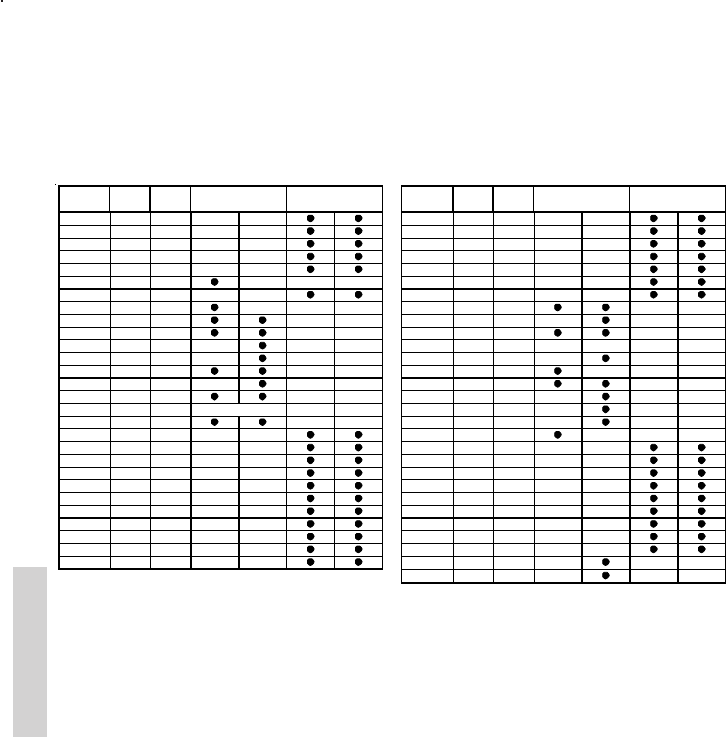
34
Channels
0544
8 Maritime Channels
8.1 International channels
Channels TX RX SIMPLEX DUPLEX Channels TX RX SIMPLEX DUPLEX
MHz MHz Intership Port Port Public MHz MHz Intership Port Port Public
1 156,050 160,650 60 156,025 160,625
2 156,100 160,700 61 156,075 160,675
3 156,150 160,750 62 156,125 160,725
4 156,200 160,800 63 156,175 160,775
5 156,250 160,850 64 156,225 160,825
6 156,300 156,300 65 156,275 160,875
7 156,350 160,950 66 156,325 160,925
8 156,400 156,400 67 156,375 156,375
9 156,450 156,450 68 156,425 156,425
10 156,500 156,500 69 156,475 156,475
11 156,550 156,550 70 156,525 156,525 DSC DSC
12 156,600 156,600 71 156,575 156,575
13 156,650 156,650 72 156,625 156,625
14 156,700 156,700 73 156,675 156,675
15 156,750 156,750 74 156,725 156,725
16 156,800 156,800 Distress and calling 75 156,775 156,775 L)
17 156,850 156,850 76 156,825 156,825 L)
18 156,900 161,500 77 156,875 156,875
19 156,950 161,550 78 156,925 161,525
20 157,000 161,600 79 156,975 161,575
21 157,050 161,650 80 157,025 161,625
22 157,100 161,700 81 157,075 161,675
23 157,150 161,750 82 157,125 161,725
24 157,200 161,800 83 157,175 161,775
25 157,250 161,850 84 157,225 161,825
26 157,300 161,900 85 157,275 161,875
27 157,350 161,950 86 157,325 161,925
28 157,400 162,000 87 157,375 157,375 *)
88 157,425 157,425 *)
Notes:
L) 1W TX power
*) Channel 87 and 88 became simplex channels following the instruction of Automatic
Identification channels AIS1 at 161.975MHz and AIS2 on 162.025MHz.
NB! The RX and TX frequencies can be read from menu (4.4.2).
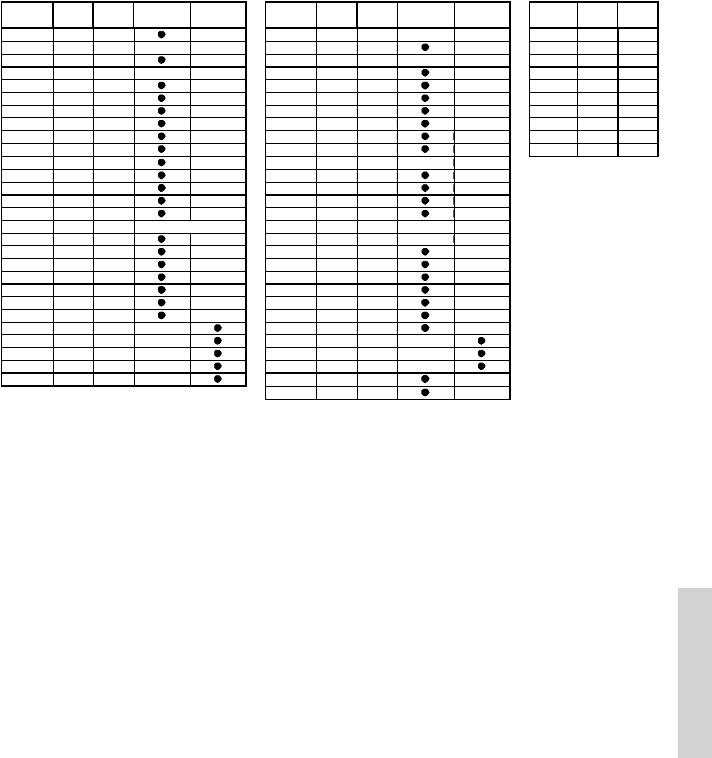
35
Installation
0544
8.2 US channels
Channels TX RX SIMPLEX DUPLEX Channels TX RX SIMPLEX DUPLEX Channels WX RX
MHz MHz MHz MHz MHz
1 156,050 156,050 60 B) P0 WX1 162,550
2B) 61 156,075 156,075 !) P1 WX2 162,400
3 156,150 156,150 !) 62 B) P2 WX3 162,475
4B) 63 156,175 156,175 P3 WX4 162,425
5 156,250 156,250 64 156,225 156,225 !) P4 WX5 162,450
6 156,300 156,300 65 156,275 156,275 P5 WX6 162,500
7 156,350 156,350 66 156,325 156,325 P6 WX7 162,525
8 156,400 156,400 67 156,375 156,375 L) P7 WX8 161,650
9 156,450 156,450 68 156,425 156,425 P8 WX9 161,775
10 156,500 156,500 69 156,475 156,475 P9 WX10 163,275
11 156,550 156,550 70 156,525 156,525 DSC
12 156,600 156,600 71 156,575 156,575
13 156,650 156,650 L) 72 156,625 156,625
14 156,700 156,700 73 156,675 156,675
15 156,750 RX) 74 156,725 156,725
16 156,800 156,800 Distress and calling 75 B)
17 156,850 156,850 76 B)
18 156,900 156,900 77 156,875 156,875 L)
19 156,950 156,950 78 156,925 156,925
20 157,000 157,000 79 156,975 156,975
21 157,050 157,050 !) 80 157,025 157,025
22 157,100 157,100 81 157,075 157,075 !)
23 157,150 157,150 !) 82 157,125 157,125 !)
24 157,200 161,800 83 157,175 157,175 !)
25 157,250 161,850 84 157,225 161,825
26 157,300 161,900 85 157,275 161,875
27 157,350 161,950 86 157,325 161,925
28 157,400 162,000 87 157,375 157,375 *)
88 157,425 157,425 *)
Notes:
L) 1 W TX power. Channels 13, 67 and 77 are limited to low transmission power.
B) Channels 2, 4, 60, 62, 75 and 76 cannot be selected in US mode.
!) Channels 3, 21, 23, 61, 64, 81, 82 and 83 may be legally used in some circum-
stances but not by the general public in US waters.
RX) Only RX: transmissions are blocked.
NB! The RX and TX frequencies can be read from menu (4.4.2).
*) Channels 87 and 88 became simplex channels following the introduction of Auto-
matic Identification channels AIS1 at 161.975MHz and AIS2 on 162.025MHz.
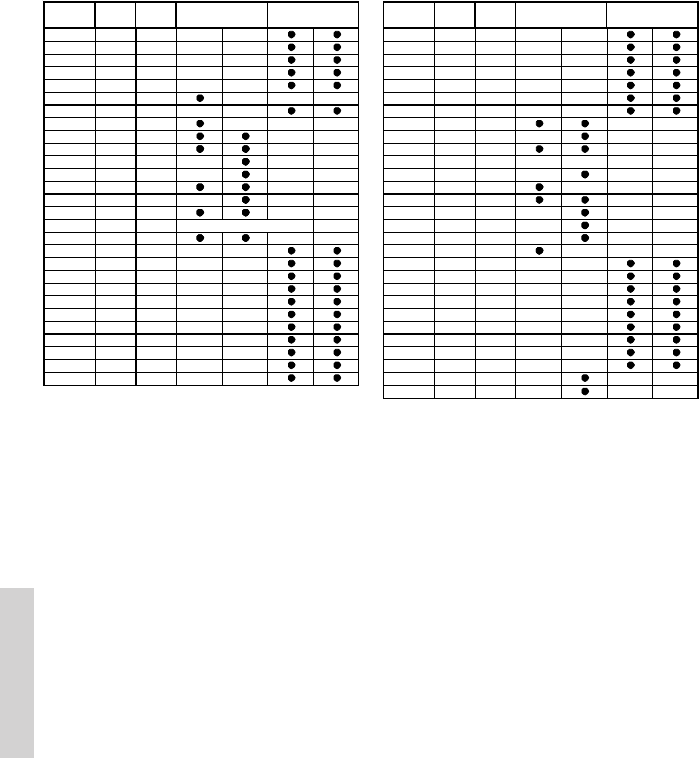
36
Installation
0544
8.3 BI channels
Channels TX RX SIMPLEX DUPLEX Channels TX RX SIMPLEX DUPLEX
MHz MHz Intership Port Port Public MHz MHz Intership Port Port Public
1 156,050 160,650 60 156,025 160,625
2 156,100 160,700 61 156,075 160,675
3 156,150 160,750 62 156,125 160,725
4 156,200 160,800 63 156,175 160,775
5 156,250 160,850 64 156,225 160,825
6 156,300 156,300 L) 65 156,275 160,875
7 156,350 160,950 66 156,325 160,925
8 156,400 156,400 L) 67 156,375 156,375
9 156,450 156,450 68 156,425 156,425
10 156,500 156,500 L) L) 69 156,475 156,475
11 156,550 156,550 L) 70 156,525 156,525 DSC DSC
12 156,600 156,600 L) 71 156,575 156,575 L)
13 156,650 156,650 L) L) 72 156,625 156,625 L)
14 156,700 156,700 L) 73 156,675 156,675
15 156,750 156,750 L) L) 74 156,725 156,725 L)
16 156,800 156,800 Distre ss a nd ca l li ng 75 156,775 156,775 L)
17 156,850 156,850 L) L) 76 156,825 156,825 L)
18 156,900 161,500 77 156,875 156,875 L)
19 156,950 161,550 78 156,925 161,525
20 157,000 161,600 79 156,975 161,575
21 157,050 161,650 80 157,025 161,625
22 157,100 161,700 81 157,075 161,675
23 157,150 161,750 82 157,125 161,725
24 157,200 161,800 83 157,175 161,775
25 157,250 161,850 84 157,225 161,825
26 157,300 161,900 85 157,275 161,875
27 157,350 161,950 86 157,325 161,925
28 157,400 162,000 87 157,375 157,375 *)
88 157,425 157,425 *)
Notes:
L) 1W TX power on channels 6, 8, 10, 11, 12, 13, 14, 15, 17, 71, 72, 74 , 75, 76 and 77.
*) Channels 87 and 88 became simplex channels following the introduction of Auto-
matic Identification channels AIS1 at 161.975MHz and AIS2 on 162.025MHz.
NB! The ATIS function is enabled on all channels. RX and TX frequencies can be read
using menu (4.4.2).
Dual Watch & Scanning modes are disabled.
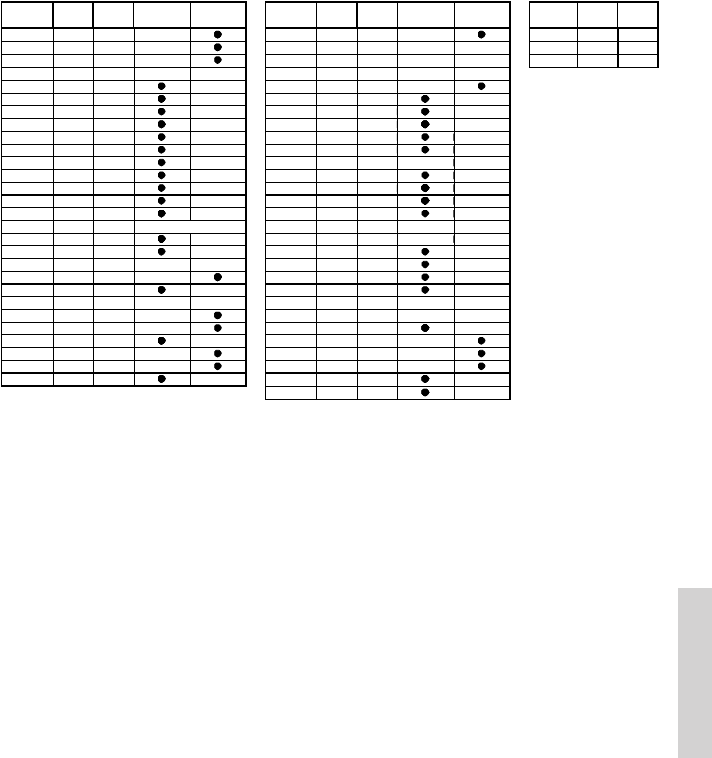
37
Installation
0544
8.4 CA channels
Channels TX RX SIMPLEX DUPLEX Channels TX RX SIMPLEX DUPLEX Channels WX RX
MHz MHz MHz MHz MHz
1 156,050 160,650 60 156,025 160,625 P0 WX1 162,550
2 156,100 160,700 61 B) P1 WX2 162,400
3 156,150 160,750 62 B) P2 WX3 162,475
4B) 63 B)
5 156,250 156,250 64 156,225 160,825
6 156,300 156,300 !) 65 156,275 156,275 L)
7 156,350 156,350 66 156,325 156,325 L)
8 156,400 156,400 !) 67 156,375 156,375 !)
9 156,450 156,450 68 156,425 156,425
10 156,500 156,500 69 156,475 156,475
11 156,550 156,550 70 156,525 156,525 DSC
12 156,600 156,600 71 156,575 156,575
13 156,650 156,650 72 156,625 156,625 !)
14 156,700 156,700 73 156,675 156,675 !)
15 156,750 156,750 L) 74 156,725 156,725
16 156,800 156,800 Distress and calling 75 B)
17 156,850 156,850 L) 76 B)
18 156,900 156,900 77 156,875 156,875 L)
19 B) 78 156,925 156,925
20 157,000 161,600 L) 79 156,975 156,975
21 161,650 RX) 80 157,025 157,025
22 B) 81 B)
23 157,150 161,750 82 B)
24 157,200 161,800 83 161,775 RX)
25 161,850 RX) 84 157,225 161,825
26 157,300 161,900 85 157,275 161,875
27 157,350 161,950 86 157,325 161,925
28 162,000 RX) 87 157,375 157,375 *)
88 157,425 157,425 *)
Notes:
L) 1 W TX power. Channels 15, 17, 20, 65, 66 and 77 are limited to 1W transmission
power.
B) Channels 4, 19, 22, 61, 62, 63, 81 and 82 cannot be selected in CA mode.
!) Channels 6, 8, 23, 67, 72 and 73 may be legally used in some circumstances
but not by the general public in CA waters.
RX) Only RX: transmission is blocked.
NB! The RX and TX frequencies can be read from menu (4.4.2).
*) Channels 87 and 88 became simplex channels following the introduction of Auto-
matic Identification channels AIS1 at 161.975MHz and AIS2 on 162.025MHz.
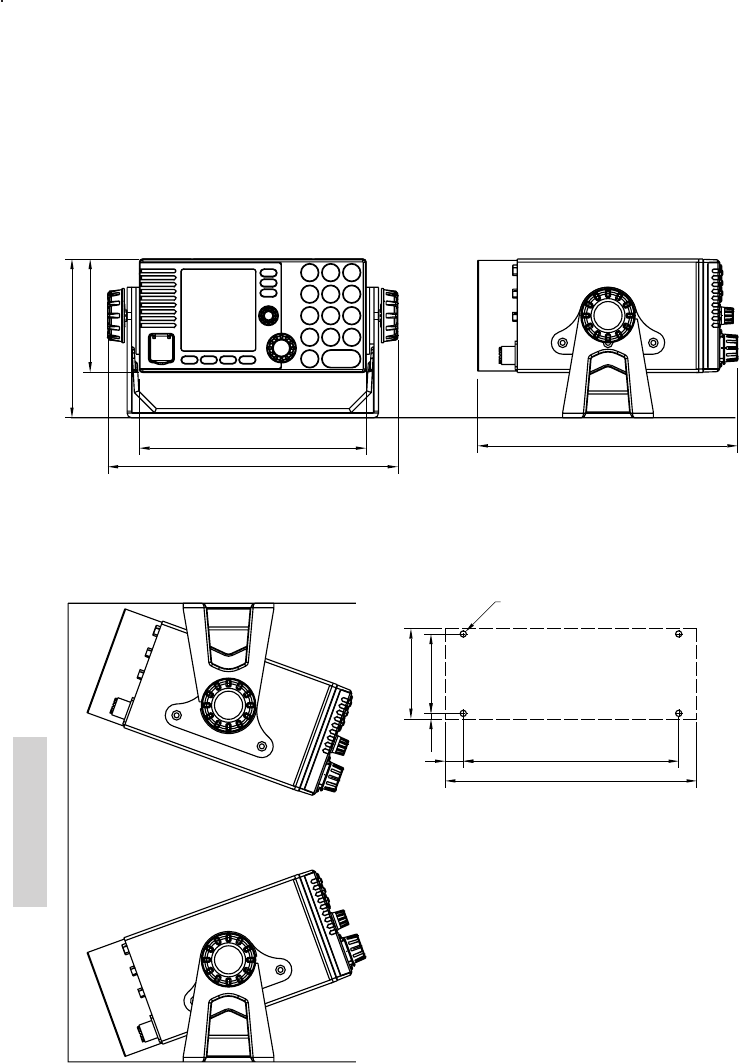
38
Installation
0544
9 Installation
9.1 Mounting possibilities
VHF with mounting bracket
39835
256
140
200
100
229
Mounting option Drilling plan
39836
Tilting +/- 20°
39837
16
190
222
5
70
80
4xø5.5
Weight (RT5022):
VHF 4.1 kg
Mounting bracket 1.0 kg
Weight (RT5020):
VHF 4.9 kg
Mounting bracket 1.0 kg
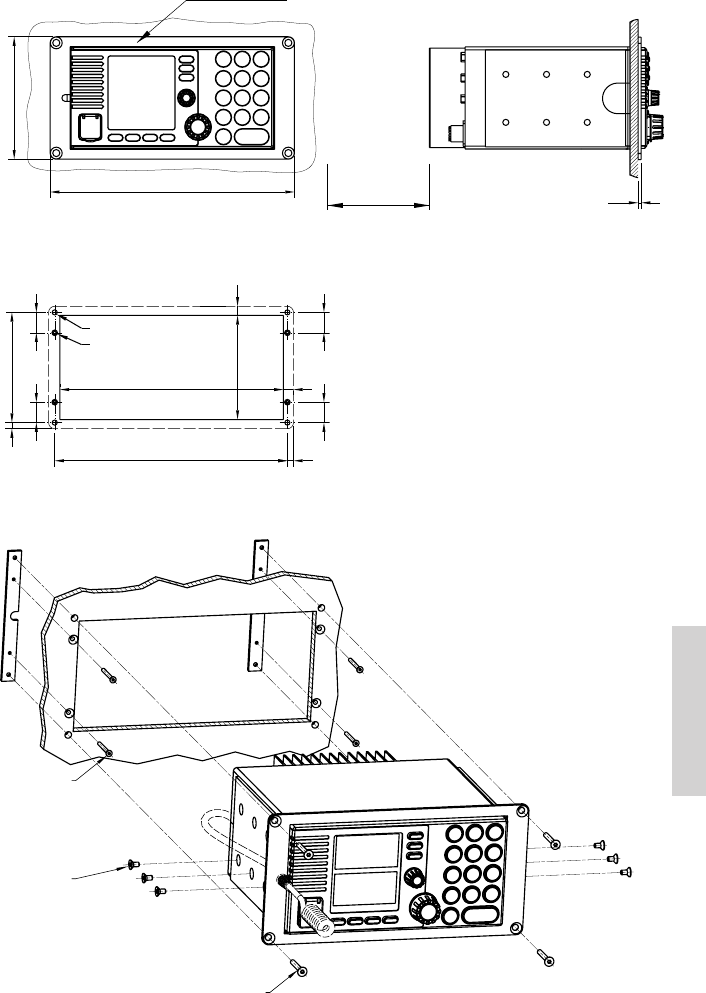
39
Installation
0544
VHF with flush mounting bracket
39938
Bracket (Option)
Space for Cable entry
min. 100.00
240
120
3
Drilling plan
39945
228
10
219
9
102
6
108
6
2020
20 20
4 pcs. ø5
4 pcs. ø3.5
countersunk for M3
Weight:
Mounting kit
(Part no. 739814) 1 kg
WARNING:
Only use screws supplied with mounting
kit for attaching flush mounting bracket to
VHF radio.
4 pcs M3x30
4 pcs M4x30
6 pcs M4x8
39966
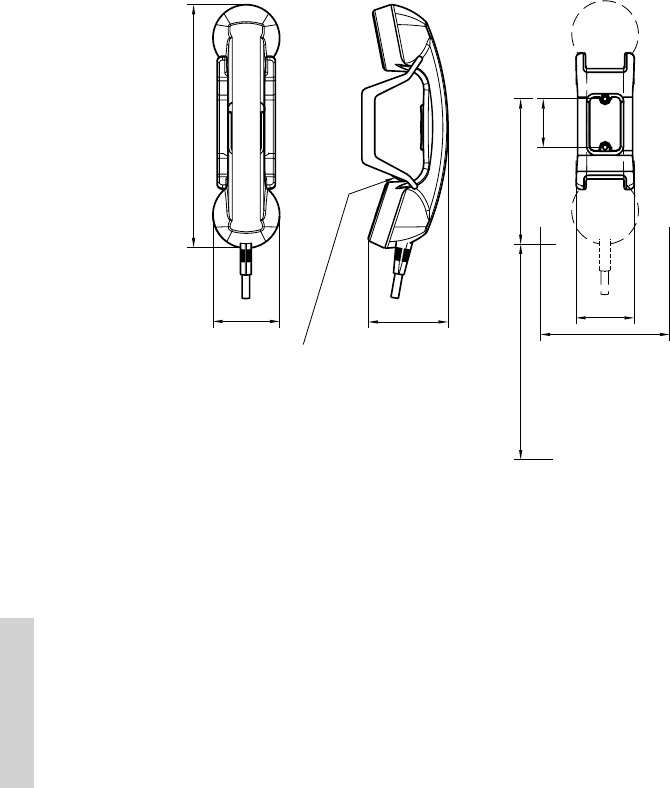
40
Installation
0544
Handset for transceiver
This hand-set has a hook-on/off functionally,
which is activated by a small magnet imbedded
in the ceadle.
The cradle must be installed as illustrated in
order to ensure the hook-on/off functionality
of the Handset.
75
62
226
* 120
min. 200
Space for handset access
Space for cable and handset cable
54
45
135
39655B
Drilling plan
Weight
Handset for transceiver0.4 kg
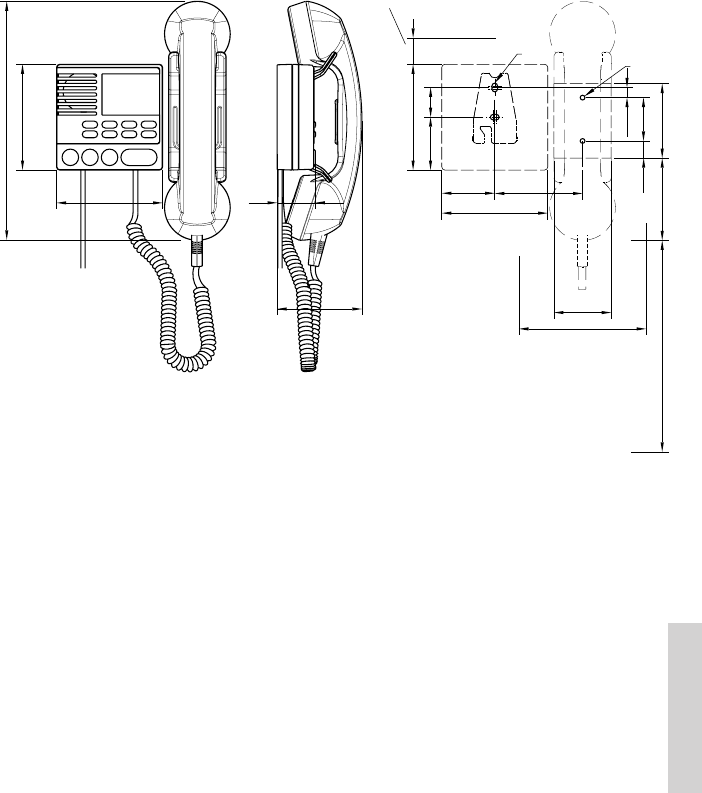
41
Installation
0544
Semi-functional control unit
39654B
Drilling plan
100
100
36
226
80
120
min. 200
Space for handset
Space for cable and handset cable
7870
41
54
100
50 28
100
16
50
access recommended
2xø4.5
25
detaching control unit
Space for installing and
2xø5
Length of spiral cord
at rest : 380 mm
9,6
83
Weight :
Semi-functional control unit 1.2 kg
Installing a single CU
After the CU is connected the unit can be operated straight away without any configuring.
Installation with 2 CUs
If an installation is carried out providing 2 new CUs, it is important when powering these up
for the first time, that this is done sequentially, to allow the CUs to acquire their individual
identity on the SPARC II bus:
2 newly installed CUs:
• Power on VHF
• Power on first CU
• Power on second CU
If an additional CU is installed in a system already working with a single CU, the
already existing CU must be switched on prior to the first power-on of the new CU.
Adding a CU in an installation already providing one CU:
• Power on VHF
• Power on the existing CU
• Power on the newly installed CU
This procedure is also followed if a CU is moved from another installation to this installation.
Always turn on the existing CU before turning on the last acquired one - when powering for
the first time after installation.
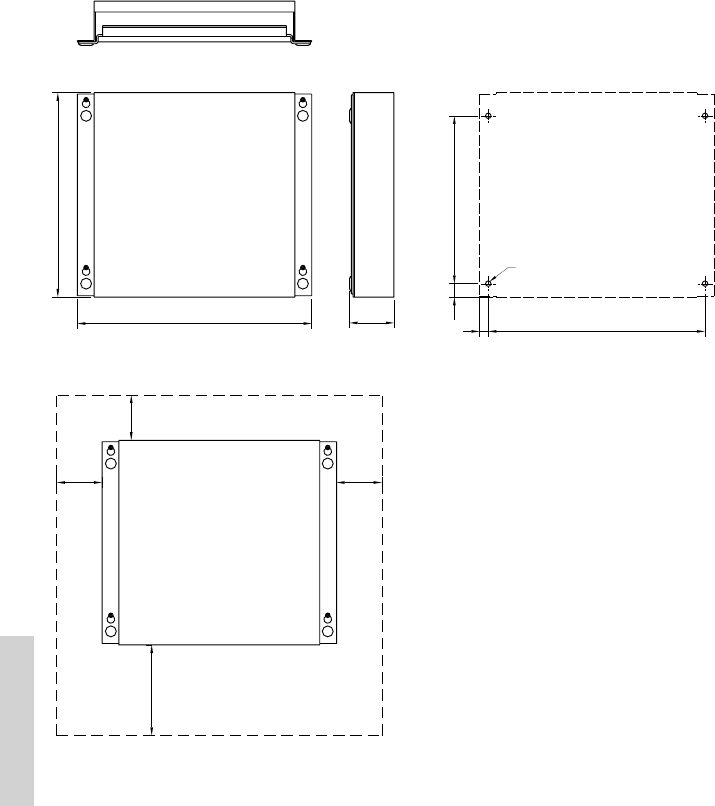
42
Installation
0544
Connection box
4 pcs. ø6
Drilling plan
39656
** Free space for cable entry.
* Free space for mounting,
Mounting
185
14.85
2399.75
258.4
225.4
49
* 50
** min. 100
* 50
* 50
Weight
Connection box 1.7 kg
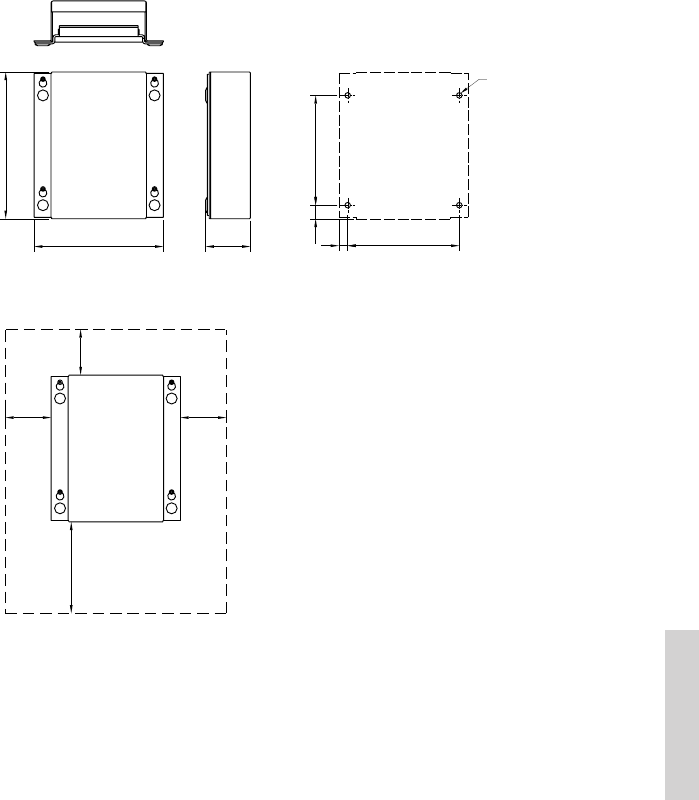
43
Installation
0544
Extension box
4 pcs. ø6
Drilling plan
39657
** Free space for cable entry.
* Free space for mounting,
Mounting
141.4
160.4
49
* 50
** min. 100
* 50
* 50
122
9.7
14.85
120
Weight
Extension box 0.7 kg
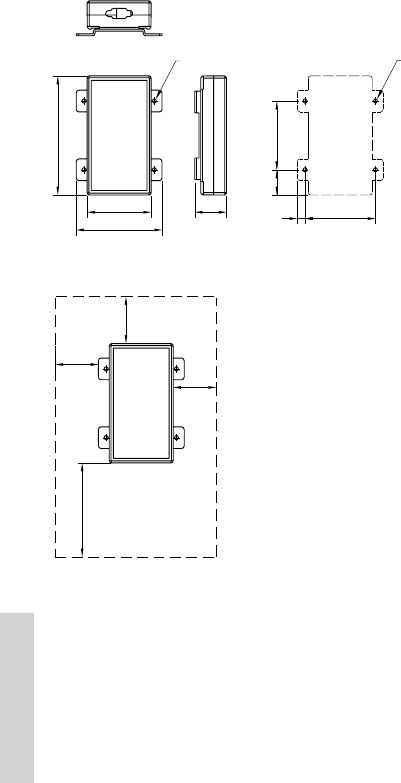
44
Installation
0544
LAN box
Drilling plan
39658
** Free space for cable entry.
* Free space for mounting,
Mounting
* 50
** min. 100
* 50
* 50
73
26.75
82
9
126.5
37
74.5
100
4xø4.5 4xø3.5
Weight
LAN box 0.3 kg
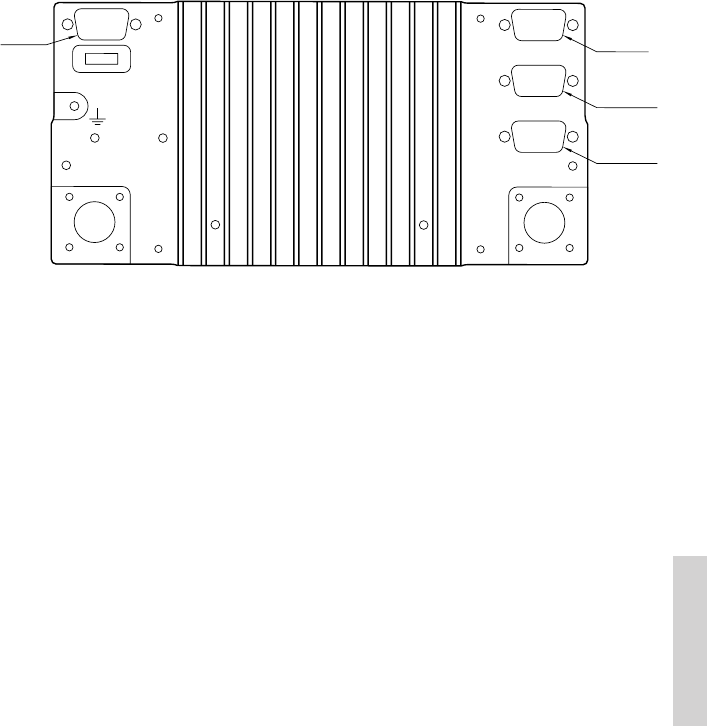
45
Installation
0544
9.2 Interface connections
VHF (rear view)
39815A
FUSE
Option
Sparc II Bus
Handset
12-24V DC
Main AntennaDSC Antenna
15-pin
sub D male
15-pin
sub D female
9 pin
sub D female
Power
connector
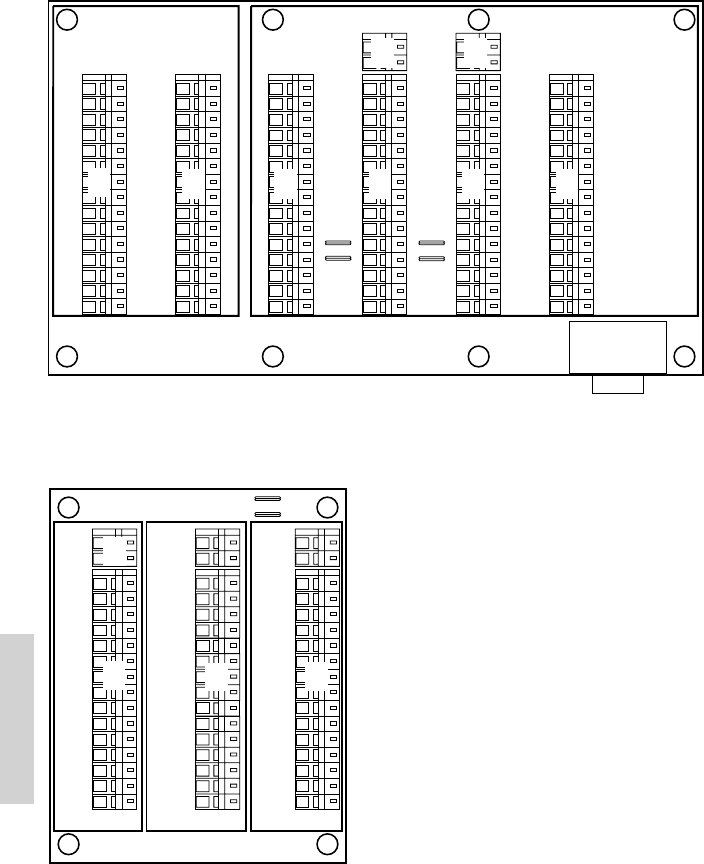
46
Installation
0544
Connection box board 639121
39816B
X7
J3
J4
J1
J2
X8
X9
X4
X3
X5
X6
X1
X2
CALL
EXT
EXT LS-
RX AF+
EXT /
CU LS
Line out+
EB/CU
+12.5V
TX AF-
GND
DATA+
+12.5V
X7
LAN
DATA-
TX AF+
+12.5V
RX AF-
CONNECTIONS
INTERFACE
OPTIONS
RT50XX
SPARC II
CONNECTIONS
GND
EXT LS+
Line out-
VDR-
EXT /
CU LS
AUX2
CALL
GND
NMEA+
AUX1
AUX1
VDR+
AUX2
INT LS+
INT LS-
ALARM
IF CU IS CONNECTED TO
EB/CU TERMINALS THEN
REMOVE J1 & J2 FOR X4
AND J3 & J4 FOR X5
ALARM
NMEA-
SPARC II BUS
1
6
5
7
4
3
2
9
8
10
15
14
11
12
13
1
6
2
3
4
7
5
14
10
8
9
13
12
15
X5
X9
EB/CU
X8
15
11
11
OPTIONS
12
13
9
RT50XX
OPTIONS
8
X6
10
14
5
7
4
3
2
6
1
X2
15
13
9
8
10
14
5
7
4
1
6
2
3
4
7
5
14
10
8
9
13
X4X3
15
3
2
6
1
X1
Extension box board 639123
39817B
J2
J1
X1
X3
X2
X4
X5
X6
7
4
2
5
X6:
J1 & J2 MOUNTED = EXT LS
3
6
DATA-
1
12
13
15
14
11
X1
10
+12.5V
8
12
13
15
EXT LS-
GND
14
EXT/CU
LS-
11
7
3
10
6
Line out
1
5
2
4
X5
RX AF-
X6
EXT LS+
X4
9
8
Line out
9
CU LS-
EXT/CU
LS+
EXT LS+
+12.5V
GND
RX AF+
TX AF-
TX AF+
CB/RT50XX
EB/CU
CU
+12.5V
DATA+
CU LS+
EXT LS-
X2
J1 & J2 NOT MOUNTED = CU LS
X3
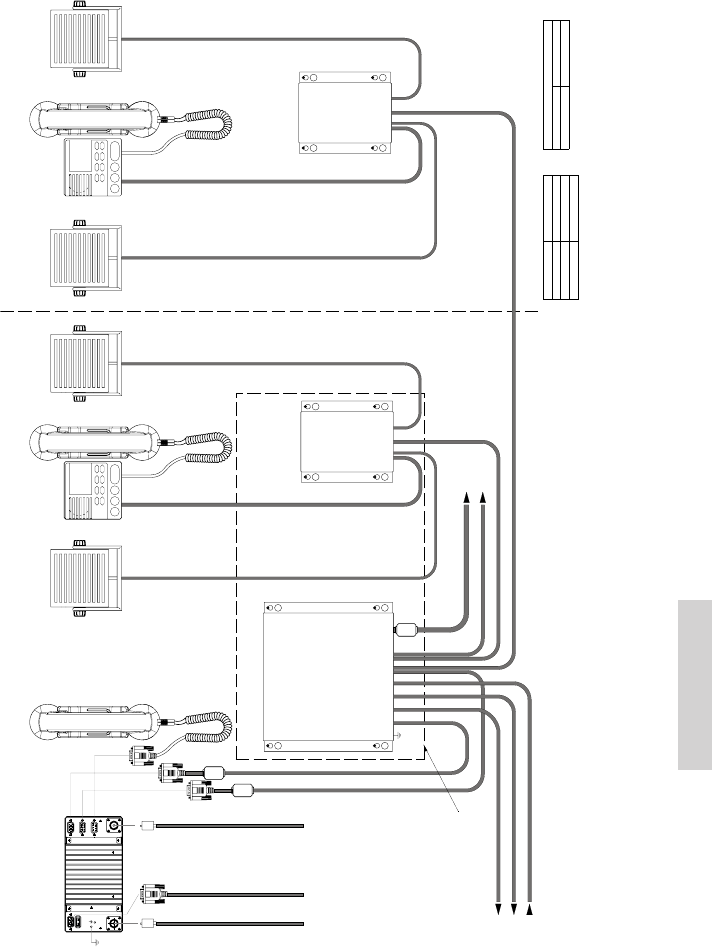
47
Installation
0544
9.2.1 System block diagram with connection box and
2 x extension box
(rear view)
Option
SPARC II bus
Handset
(Optional)
DSC Antenna
RG214 or better
Cable part no. 56.114
L=5m
furnished with Connection Box
Cable part no. 539603
L=5m
furnished with Connection Box
To VDR
To ships alarm panel or announcer
2x0.5mm2
From position sensor (GPS)
(mixed Rx/Tx Audio)
2x0.5mm2,
max 100m
NMEA
1x2x0.5mm2
(Optional)
(Optional)
Extension Box
Ext. speaker (CU)
Ext. speaker (VHF)
CU 1 (Optional)
(Optional)
Extension Box
To LAN Box (optional)
To Alarm Panel - (if installed)
2x2x0.5mm2, max 100m
8x2x0.5mm2, max. 20m
8x2x0.5mm2, max. 20m
Connection Box
39701B
Cable part no. 56.111
L=1.2m
furnished with LAN Box
VHF
L=3m
(Optional) (Optional)
Ext. speaker (CU)
Ext. speaker (VHF)
CU 2 (Optional)
L=3m
Handset
PL259
RX/TX Antenna
RG214 or better
PL259
Power
12-24V DC
Cable
L=1.5m
furnished with equiptment
(Optional)
Cable Connection diagram
See next page:
Note:
SPARC II cable length specification
Conductor size
Maximum cable length
8x2x0.5mm2
20m
8x2x0.75mm2
30m
8x2x1mm2
40m
All cabling not furnished with equipment to be overall screened type.
Cable screens must be securely grounded at cable inlets in connection boxes, as illustrated in cable connection diagrams.
120W min. continuous
Power cable p/n 539826, 1.5m 2x4.0mm2
+ VDC
White
0 VDC
Black
Power connection 12-24VDC,
External power supply input is galvanically isolated from equipment ground reference, i.e. chassis.
Equipment internal power supply reference (-) is at equipment ground reference, i.e. chassis.
.
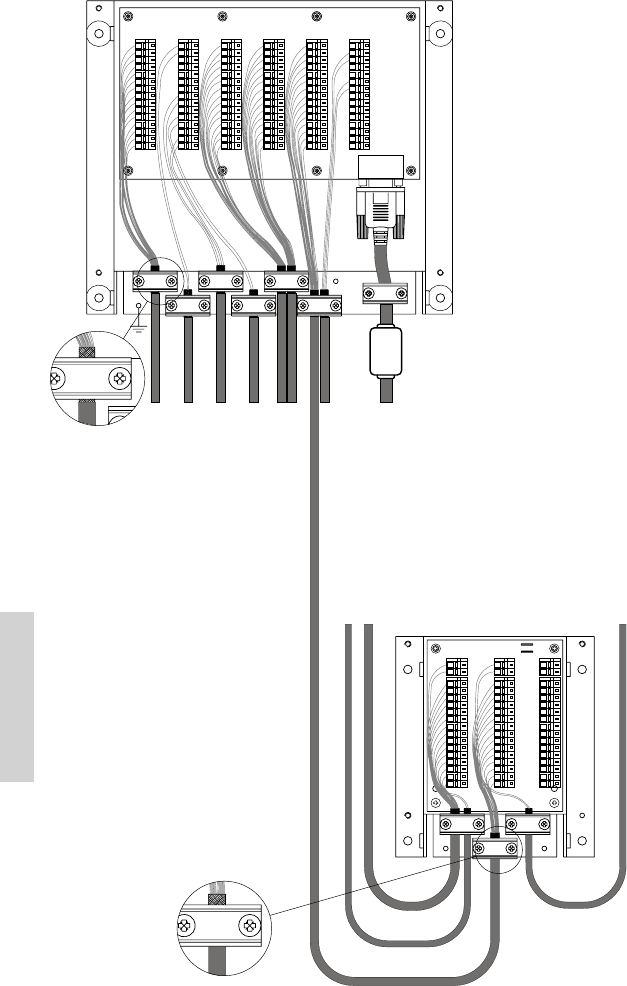
48
Installation
0544
Cable connection diagram
X7
SPARC II BUS
CONNECTIONS CONNECTIONS
OPTIONS
39734A
X1
X2
X3
X4
X5
X6
VDR-
1
SPARC II
9
OPTIONS
AUX1
6
EXT LS2
8
CALL
GND
AUX2
+12.5V
INTERFACE
OPTIONS
LAN
NMEA+
EXT
10
NMEA-
2
Line out-
Line out+
RX AF+
3
4
7
15
14
13
12
11
TX AF-
RX AF-
EXT LS1
AUX1
VDR+
DATA-
TX AF+
EXT LS2
+12.5V
5
GND
GND
ALARM
CALL
DATA+
ALARM
AUX2
EXT LS1
+12.5V
5
11
12
13
14
15
7
4
3
2
10
8
6
9
1
H1
H2
H3
H4
X1
X3
X2
X4
X5
X6
J2
J1
7
4
2
5
LS-
3
6
DATA-
1
11
LS+
X1
+12.5V
8
12
13
15
GND
14
EXT LS+
11
7
3
10
6
Line out
1
5
2
4
X5
X6
X4
9
8
Line out
9
EXT LS-
CU LS+
+12.5V
GND
EB/CU
CB/RT50XX
CU
+12.5V
DATA+
CU LS-
X6 :
X3
X2
10
12
13
15
14
EB/CU
EXT /
CU LS
EB/CU
RT50XX RT50XX
EXT /
CU LS
EXT/CU
LS-
EXT/CU
LS+
IF CU IS CONNECTED TO
EB/CU TERMINALS THEN
REMOVE J1 & J2 FOR X4
AND J3 & J4 FOR X5
J1 & J2 MOUNTED = EXT LS
J1 & J2 NOT MOUNTED = CU LS
To VHF DSC
cable part no. 56.114
To VHF DSC
To VDR
To ships alarm panel or announcer
From position sensor (GPS)
(mixed Rx/Tx Audio)
NMEA
To LAN interface (optional)
To Alarm Panel - (if installed)
To extension box for CU2
CU 1 (Optional)
Ext. speaker (CU)
Ext. speaker (VHF)
Cable part no. 539603
Cable part no. 56.111
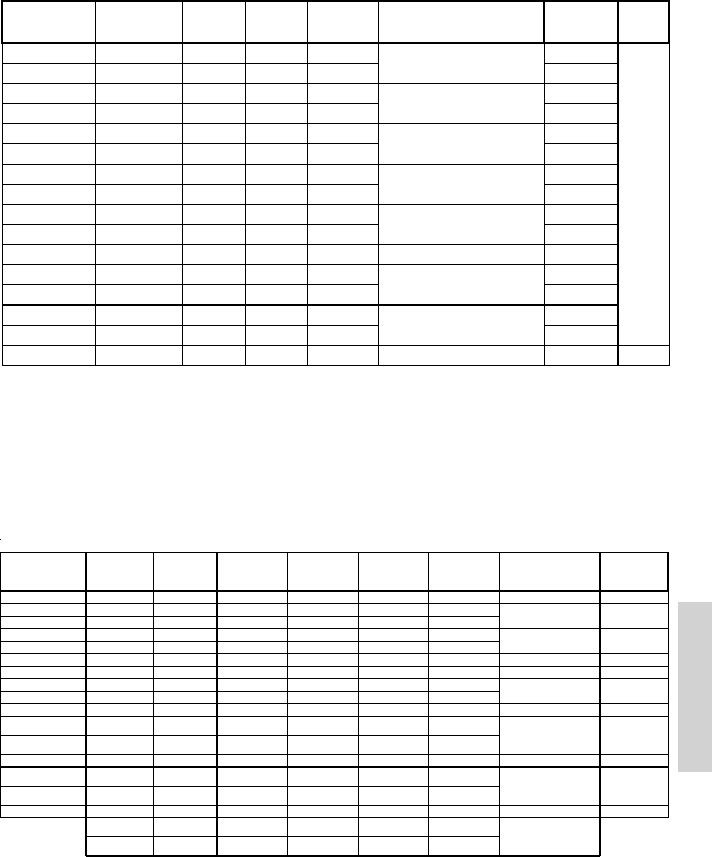
49
Installation
0544
Interfaces
Options Connections
VHF Signal Cable Connection Connection Signal description Ships cable
Options connector designation p/n 539603 box box 8 twisted pairs or
15-pin D-sub male 5m In from VHF External conn. overall screen
pin 1 VDR+ Brn X1-1 X2-1 pair no. 1
pin 2 VDR- Brn/Wht X1-2 X2-2 pair no. 1
pin 3 AUX2 Orange X1-3 X2-3 pair no. 2
pin 4 AUX2 NO Orange/Wht X1-4 X2-4 pair no. 2
pin 5 AUX 1 Blue X1-5 X2-5 pair no. 3
pin 6 AUX 1 NO Blue/Wht X1-6 X2-6 pair no. 3
pin 7 int_Speaker + Grn X1-7 X2-7 pair no. 4
pin 8 int_Speaker - Grn/Wht X1-8 X2-8 pair no. 4
pin 9 DSC CALL Red X1-9 X2-9 pair no. 5
pin 10 DSC CALL NO Red/Wht X1-10 X2-10 pair no. 5
pin 11 GND Blk+Blk/Wht X1-11 X2-11 Equipment ground pair no. 8
pin 12 NMEA + Yel X1-12 X2-12 pair no. 6
pin 13 NMEA - Yel/Wht X1-13 X2-13 pair no. 6
pin 14 DSC ALARM Purple X1-14 X2-14 pair no. 7
pin 15 DSC ALARM NO Purple/Wht X1-15 X2-15 pair no. 7
Housing Screen Chassis Chassis Screen Screens
Note 1: Relay contact ratings (resistive load) Max. switched power: 30W or 60VA
Max. switched current: 1.0A
Max. switched voltage: 150VDC or 125VAC
in accordance with IEC61162-1
Correspondingly grouped individual cabling
NMEA data input from external
position sensor (see note 2)
Relay contact closing on incoming
Distress alert (see note 1)
Relay contact closing on incoming
DSC call (see note 1)
Note 2: Following NMEA sentences are supported: GLL, RMC, ZDA, GGA, VTG, GNS
Mixed Rx/Tx audio output for
recording. Galvanically isolated,
balanced signal, 0dBm into 600Ω
VHF internal speaker output,
nom. 5W into 8Ω.
Relay contact closing on event pre
-
defined through service
programming (see note 1)
Relay contact closing on event pre
-
defined through service
programming (see note 1)
SPARC II Connections
VHF Signal Cable Extension box Extension box Cable integrated Extension box Signal description Ships cable
SPARC II connecto
r
designation p/n 56.114 In from VHF Out to CU1 with CU Out to CU2 8 twisted pairs
15-pin D-sub female or conn. Box overall screen
pin 1 12.5VDC+ Red/Wht X2-1 X1-1 Red/Wht X3-1 Power to CUs pair no. 8
pin 2 DATA_+ Yel X2-2 X1-2 Yel X3-2 pair no. 1
pin 3 DATA_- Yel/Blk X2-3 X1-3 Yel/Blk X3-3 pair no. 1
pin 4 TX_AF+ Blu/Wht X2-4 X1-4 Blu/Wht X3-4 pair no. 2
pin 5 TX_AF- Blu X2-5 X1-5 Blu X3-5 pair no. 2
pin 6 GND Orange + Red X2-6 X1-6 Orange + Red X3-6 Equipment ground pair no. 6 & 8
pin 7 12.5VDC+ Orange/Wht X2-7 X1-7 Orange/Wht X3-7 Power to CUs pair no. 6
pin 8 RX_AF+ Grn/Wht X2-8 X1-8 Grn/Wht X3-8 pair no. 3
pin 9 RX_AF- Grn X2-9 X1-9 Grn X3-9 pair no. 3
pin 10 12.5VDC+ Blk/Wht X2-10 X1-10 Blk/Wht X3-10 Power to CUs pair no. 7
pin 11 EXT.Speaker + Brn X2-11 X1-11 Brn X3-11 pair no. 4
pin 12 EXT.Speaker - Brn/Wht X2-12 X1-12 Brn/Wht X3-12 pair no. 4
pin 13 GND Blk X2-13 X1-13 Blk X3-13 Equipment ground pair no. 7
pin 14 Lineout + Purple X2-14 X1-14 Purple (NC) X3-14 pair no. 5
pin 15 Lineout - Purple/Wht X2-15 X1-15 Purple/Wht (NC) X3-15 pair no. 5
Housing Screen Chassis Chassis Screen Chassis Screen
EXT LS (VHF LS out: X5-1) CU1 LS out: X4-1 CU2 LS out: X6-1
EXT LS (VHF LS out: X5-2) CU2 LS out: X4-2 CU2 LS out: X6-2
Connecting only one CU (CU1) and leaving jumpers J1/J2 in circuit provides VHF Ext. Speaker connection available at both X5-1/2 and X6-1/2.
VHF Ext. Speaker output will be available at terminals X5-1/2.
Rx-audio line output,
balanced signal, 0dBm
into 600Ω
External speaker
output, nom. 5W into
8Ω (se e NOTE)
NOTE: In case of connecting a second CU (CU2) to the Extension Box, jumpers J1/J2 should be removed in order to disconnect VHF
Ext. Speaker (VHF LS) output from terminals X6-1/2 and make available the CU2 Ext. Speaker (CU2 LS) connections instead.
SPARC II-bus Data
SPARC II-bus Tx audio
SPARC II-bus Rx audio
VHF radio external
speaker output, nom.
5W into 8Ω
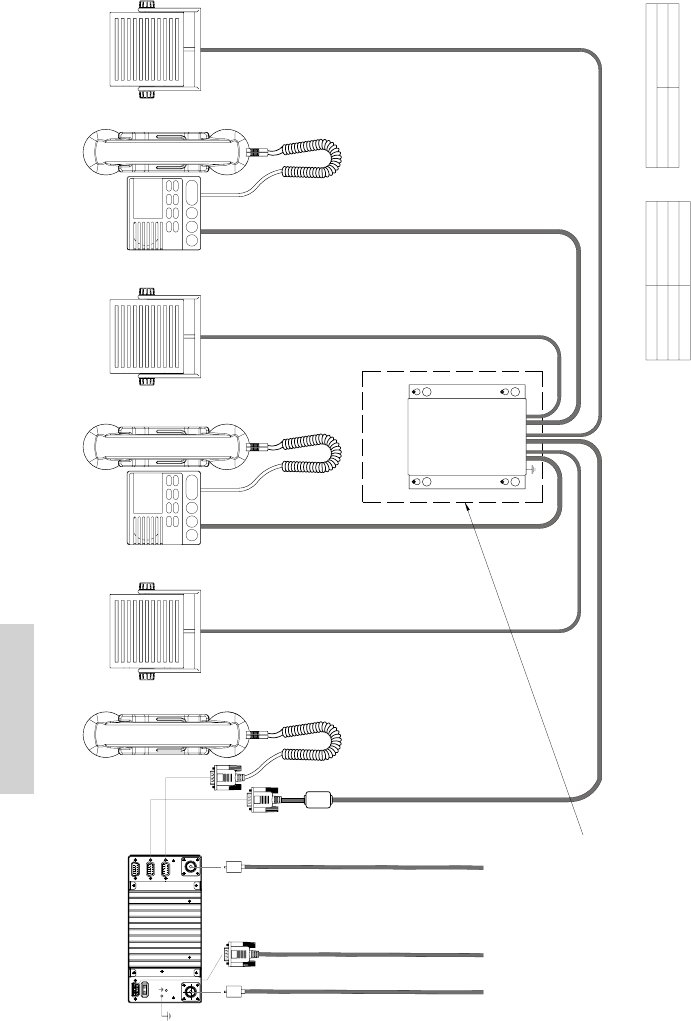
50
Installation
0544
9.2.2 System block diagram with extension box
SPARC II bus
Handset
(Optional) (Optional)
Ext. speaker (CU1)
Ext. speaker (CU2)
CU 1 (Optional)
39702B
CU 2 (Optional)
(Optional)
Ext. speaker (VHF)
(Optional)
Extension Box
Note:
SPARC II cable length specification
Conductor size
Maximum cable length
8x2x0.5mm2
20m
8x2x0.75mm2
30m
8x2x1mm2
40m
All cabling not furnished with equipment to be overall screened type.
Cable screens must be securely grounded at cable inlets in connection boxes,
120W min. continuous
Power cable p/n 539826, 1.5m 2x4.0mm2
+ VDC
White
0 VDC
Black
(rear view)
56.114
L=5m
VHF
DSC Antenna
RG214 or better
PL259
RX/TX Antenna
RG214 or better
PL259
Power
12-24V DC
Cable part no. 539826
L=1.5m
furnished with equiptment
L=3m
Cable Connection diagram
See next page:
Power connection 12-24VDC,
External power supply input is galvanically isolated from equipment ground reference, i.e. chassis.
Equipment internal power supply reference (-) is at equipment ground reference, i.e. chassis.
as illustrated in cable connection diagrams.
L=3m
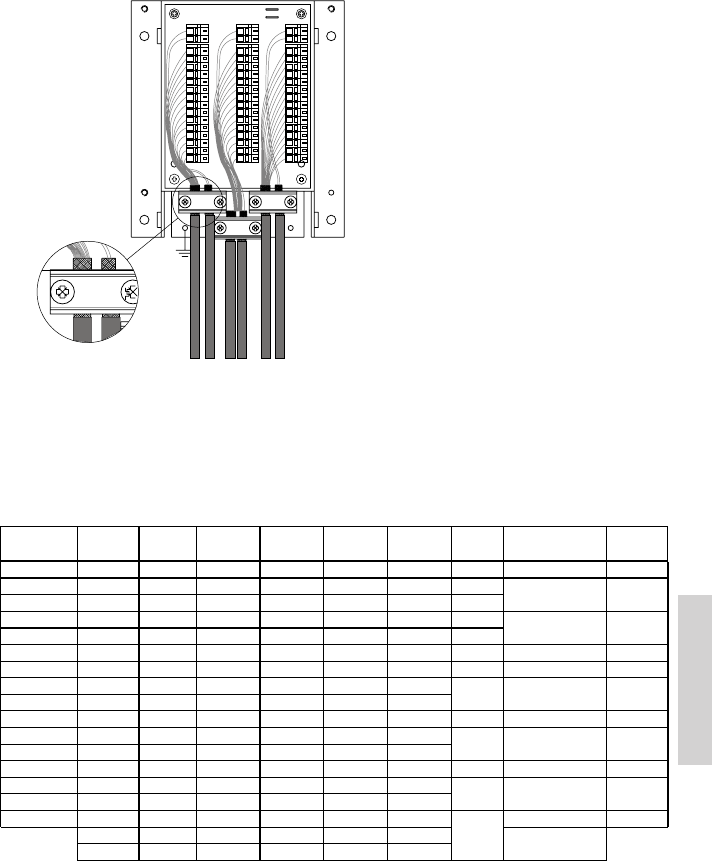
51
Installation
0544
Cable connection diagram
39735
H1
H2
H3
H4
X1
X3
X2
X4
X5
X6
J2
J1
7
4
2
5
LS-
3
6
DATA-
1
12
13
15
14
11
LS+
X1
10
+12.5V
8
12
13
15
GND
14
11
7
3
10
6
Line out
1
5
2
4
X5
RX AF-
X6
X4
9
8
Line out
9
+12.5V
GND
RX AF+
TX AF-
TX AF+
CU/CB
VHF
CU
+12.5V
DATA+
X6 :
X3
X2
12
13
15
14
10
EXT LS+
EXT LS-
CU LS+
CU LS-
EXT/CU
LS-
EXT/CU
LS+
J1 & J2 MOUNTED = EXT LS
J1 & J2 NOT MOUNTED = CU LS
VHF DSC
CU 1 (Optional)
Ext. speaker (CU)
CU 2 (Optional)
Ext. speaker (CU2)
Ext. speaker (VHF)
Interfaces
Extension box connections
VHF Signal Cable Connection box Connection box Connection box Connection box Alarm panel Signal description Ships cable
SPARC connector designation p/n 56.114 In from VHF Out to CU1 or Out to CU2 or to alarm panel "VHF" 8 twisted pairs
15-pin D-sub f emale 5m extension box extension box connector X3 overall screen
pin 1 12.5VDC+ Red/Wht X3 -1 X4 -1 X5 -1 X6 -1 P ow er t o C Us p ai r no . 8
pin 2 DATA_+ Yel X3- 2 X4-2 X5- 2 X6-2 3 pair no. 1
pi n 3 DA TA _ - Y e l / B l k X3- 3 X4- 3 X5- 3 X6- 3 5 pair no. 1
pi n 4 TX_AF+ B l u/ W ht X3- 4 X4 - 4 X5 -4 X6 -4 pair no. 2
pi n 5 TX_ A F - B lu X3 -5 X4 -5 X5 -5 X6 -5 pair no. 2
pin 6 GND Orange + Red X3-6 X4-6 X5-6 X6-6 2 Equipment ground pair no. 6 & 8
pin 7 12.5VDC+ Orange/Wht X3-7 X4-7 X5-7 X6-7 9 Power to CUs pair no. 6
pi n 8 RX_ A F + G rn / W h t X3 -8 X4 -8 X5 -8 X6 -8 pair no. 3
pi n 9 RX_A F- Gr n X3- 9 X4-9 X5- 9 X6-9 pair no. 3
pin 10 12.5VDC+ Blk/Wht X3-10 X4-10 X5-10 X6-10 Power to CUs pair no. 7
pin 11 EXT.Speaker + Brn X3-11 X4-11 X5-11 X6-11 pair no. 4
pin 12 EXT.Speaker - Brn/Wht X3-12 X4-12 X5-12 X6-12 pair no. 4
pin 13 GND Blk X3-13 X4-13 X5-13 X6-13 Equipment ground pair no. 7
pin 14 Lineout + Purple X3-14 X4-14 X5-14 X6-14 pair no. 5
pin 15 Lineout - Purple/W ht X3-15 X4-15 X5-15 X6-15 pair no. 5
Housing Screen Chassis Chassis Chassis Chassis Screen
E XT LS X8 -1 X9- 1
E XT LS X8 -2 X9- 2
NOTE: In case of connecting CU1 and/or CU2 directly to Connection Box, i.e. not utilizing Extension Box for connecting each CU,
jumpers J1/J2 and/or J3/J4 in Connection Box must be removed in order to disconnect VHF Ext. Speaker (VHF LS) output from these terminals
and make available the CU Ext. Loudspeaker (CU LS) connections instead.
Rx-audio line output,
balanced signal, 0dBm
into 600Ω
External speaker output,
nom. 5W into 8Ω (se e
NOTE)
SPARC II-bus Data
SPARC II-bus Rx audio
SPARC II-bus Tx audio
VHF radio external
speaker output, nom. 5W
into 8Ω

52
Installation
0544
9.3 Power supply
The VHF should be powered from a separately fused DC-supply of 10.8 - 32VDC and rated
at minimum 120W continuous power for installations with RT5022 (Simplex/semi-duplex),and
150W for installations with the RT5020 (Duplex)
9.4 Antenna installation and precautions
9.4.1 Antennas
The VHF equipment requires two antennas installed one for the DSC receiver and the other
(Primary) for the VHF RX/TX communication.
All commonly available 50Ω antennas covering the appropriate frequency range and
providing a VSWR less than 1.5 over this range may be used.
The antennas should be connected using a low loss type 50Ω coaxial cable, e.g. good
quality RG214 or better.
IMO-COMSAR/Circ. 32 recommends the use of a double screened type cable (like e.g.
RG214) with a maximum insertion loss of 3dB across the antenna cable installation. The
maximum antenna cable length in the installation thus depends on the quality of the cable
used, i.e. the specified attenuation (dB/m) of the cable of choise at the high end of the VHF
frequency band. As a rule of thumb the cable length using e.g. RG214 coaxial cable should
not exceed 25m.
For further details on equipment/antenna installation, reference is made to the IMO-
COMSAR/Circ. 32, GUIDELINES FOR THE HARMONIZATION OF GMDSS REQUIRE-
MENTS FOR RADIO INSTALLATIONS ON BOARD SOLAS SHIPS.
9.4.2 RX/TX antenna
In installations consisting of two or more VHF radios it is important to ensure the optimum
performance of these by carefully selecting the mutual antenna positions.
In general the highest possible RF attenuation between the VHF RX/TX antennas in the
installation should be sought for. The most important parameter in achieving this is by
ensuring that none of the RX/TX antennas in the installation are positioned at the same
horizontal level, i.e. the RX/TX antennas must be installed at shifted elevations as indicated
below.
In situations where sufficient vertical distance between two or more such antennas is found
difficult to obtain the horizontal distance between them will play an increasingly important
role in the equipment performance the less the vertical separation and as a minimum 5m
horizontal distance between any RX/TX antennas in the installation should be ensured.
Additionally, in order to minimize any increase in VSWR of the VHF RX/TX antenna this
should be installed in a distance no closer to any other mast/pole object or other RF anten-
nas than 2 m.
To the widest possible extend the VHF antennas should be kept out of the antenna main
beam of any radar and satellite equipment.
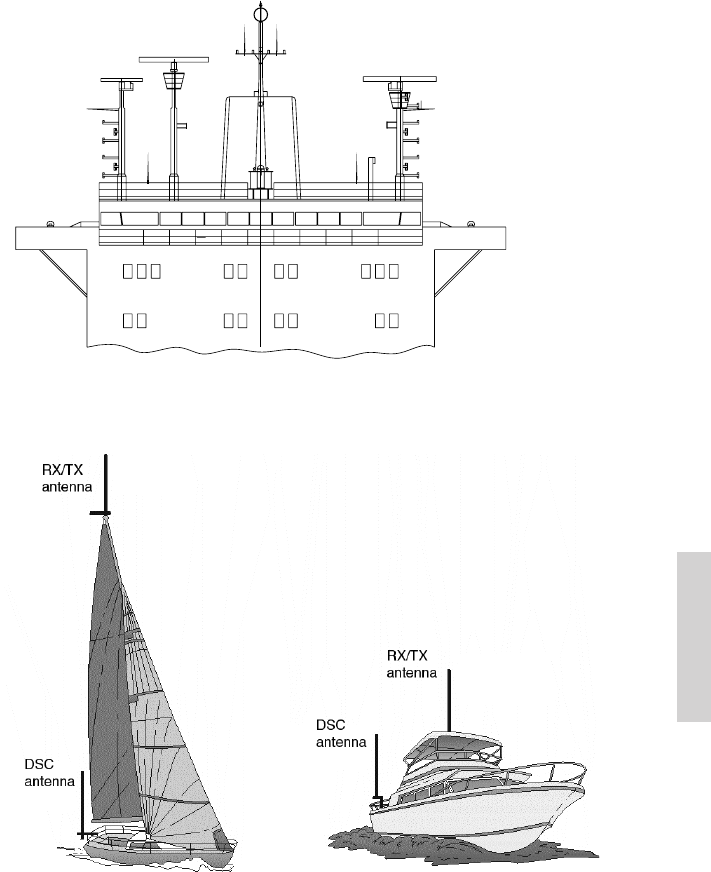
53
Installation
0544
9.4.3 DSC antenna
The positioning of the DSC antennas is less critical in terms of the imposed VSWR and due
to the nature of the DSC-signalling. It should be noted however, that the DSC receiver of a
VHF is likely to be temporarily blocked in reception due to high signal blocking, if the
associated DSC antenna is installed in close vicinity of a RX/TX antenna at the same
horizontal level while transmission takes place from this RX/TX antenna.
RX/TX
DSC
RX/TX
DSC
No. 1 VHFNo. 2 VHF
No. 2 VHFNo. 1 VHF
39679
Example of VHF antenna arrangement.
Example of VHF antenna arrangement.

54
Installation
0544
10 Technical specifications
10.1 General information
Channel Tables 4 pre-programmed channel tables covering the following
regions:
• International waters - according to radio regulations
• US waters – according to radio regulations
• Inland waters (with ATIS) – according to radio
regulations
• Canadian waters – covering most areas
Private Channels Up to 30 private channels in 3 separate banks (per
channel) mode designated F,P or L. Each bank contains 10
private channels. Weather channels are pre-configured for
US and Canadian regions, occupying a number of private
channels.
Channel spacing 25 kHz / optional 12.5 kHz
Contact List User programmable with up to 200 entries for easy DSC
radiotelephony initiation.
Scanning Priority scanning. All channels or scanning up to 3 user
programmable scan tables in each channel mode.
Voice replay Voice replay facility of up to 90 seconds of received voice
data.
Automatic squelch Automatic squelch adjustment with memory function.
Readout Dimming facility for better sight at night.
10.2 General DSC facilities
DSC operation According to Rec. ITU-R M.541-9
and Rec. ITU-R M.689-2
DSC protocol According to Rec. ITU-R M.493-11 Class A
Navigator interface According to IEC 61162-1
GLL, RMC, ZDA, GGA, VTG, GNS
Symbol error rate
Below 1*10-2 -121 dBm or 0,20 ìV p.d.
Modulation 1700 Hz ± 400 Hz
1200 baud
Frequency error below ± 1 Hz
Residual modulation below –26 dB
10.3 Specific data for transceiver unit RT5022
Frequency range Rx / Tx:149.300 - 163.750 MHz
Operation modes Simplex / Semiduplex
Modulation G3EJN for Telephony
G2B for DSC.
Frequency stability below ± 3 ppm
Aerial connectors Standard 50 ohm female SO239
Temperature range -15 ºC to +55 ºC
Supply voltage 12V to 24V DC nominal

55
Installation
0544
Supply range 10,8V to 31,2V DC
Transceiver dimensions H*W*D 100*200*210 mm
Transceiver weight 4,1 Kg
Receiver
Sensitivity for 20 dB SINAD
CCITT weighted -121 dBm typical
AF rated Power
Internal L.S. 5 Watt in 8 ohm
Output for External L.S. 5 Watt in 8 ohm
Distortion below 5 %
S/N ratio more than 43 dB
Spurious emission below 0,25 nW
Spurious response rejection more than 74 dB
Intermodulation response more than 73 dB
Co- channel rejection better than –10 dB
Adjacent channel selectivity more than 74 dB
Blocking level more than 94 dBìV
Transmitter
RF output power
High 25W +0dB to –0,5dB
Low 0,85 W +0,5dB to –1dB
Adjacent channel power below 75 dB
Conducted spurious emission below 0,25 mW
Distortion below 3 %
S/N ratio better than 46 dB
10.4 Specific data for transceiver unit RT5020
Frequency range Rx / Tx:150.800 - 157.425 MHz
Rx: 160.625 – 163.600 MHz
Operation modes Simplex / Duplex
Modulation G3EJN for Telephony
G2B for DSC.
Frequency stability below ± 3 ppm
Aerial connectors Standard 50 ohm female SO239
Temperature range -15 ºC to +55 ºC
Supply voltage 12V to 24V DC nominal
Supply range 10,8V to 31,2V DC
Transceiver dimensions H*W*D 100*200*210 mm
Transceiver weight 4,9 Kg
Receiver
Sensitivity for 20 dB SINAD
CCITT weighted -119 dBm typical
Duplex spurious response att. More than 74 dB
Duplex desentization below 3 dB
AF rated Power
Internal L.S. 5 Watt in 8 ohm
Output for External L.S. 5 Watt in 8 ohm
Distortion below 5 %

56
Installation
0544
S/N ratio more than 43 dB
Spurious emission below 0,25 nW
Spurious response rejection more than 74 dB
Intermodulation response more than 73 dB
Co- channel rejection better than –10 dB
Adjacent channel selectivity more than 74 dB
Blocking level more than 94 dBìV
Transmitter
RF output power
High 25W +0dB to –0,5dB
Low 0,85 W +0,5dB to –1dB
Adjacent channel power below 75 dB
Conducted spurious emission below 0,25 mW
Distortion below 3 %
S/N ratio better than 46 dB
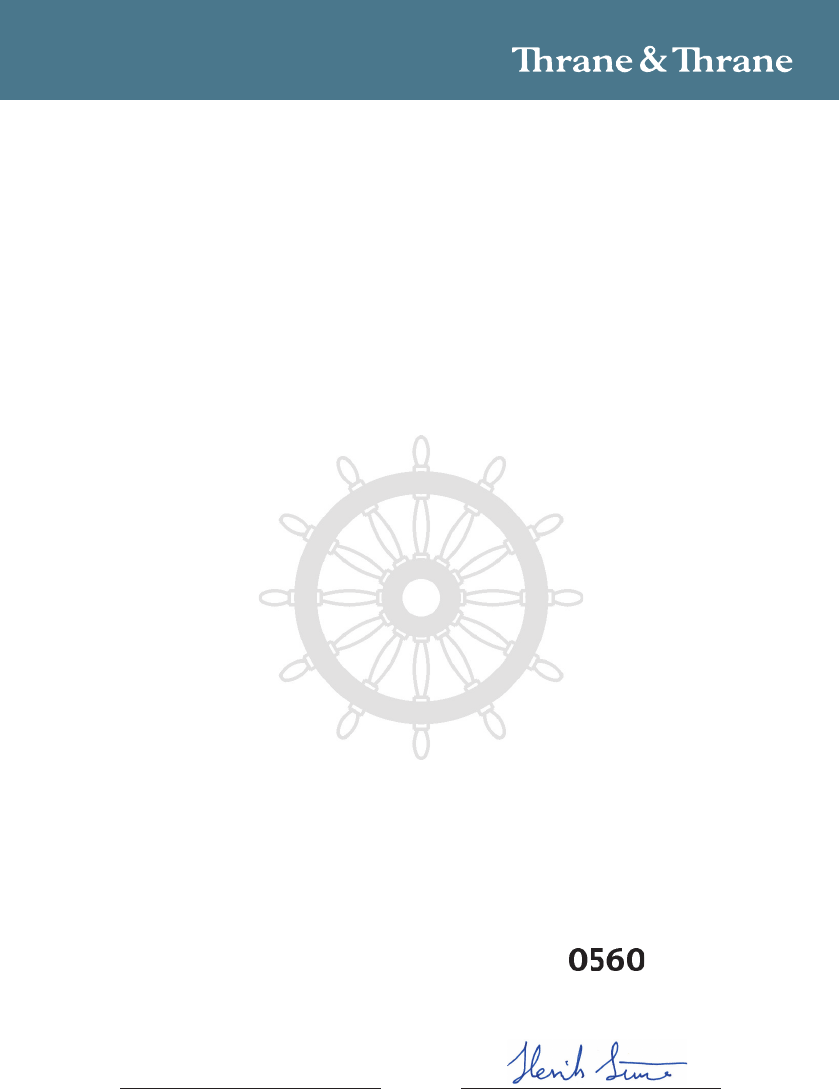
Doc. no 39861D00_05212002/AA/02
Date Executive Chief Officer
Henrik Lunde
02.11 - 2005
DECLARATION OF CONFORMITY
Thrane & Thrane A/S
Porsvej 2
9200 Aalborg SV
DK-Denmark
We as manufacturer herewith declare that the following equipment complies with the
specifications of the Marine Equipment Directive 96/98/EC & the amending Directive 2002/75/
EC, A.1/5.1: A.1/5.2
Equipments
SAILOR RT50xx VHF Radiotelephone with DSC Controller & Ch 70 Watch Keeping Receiver
Consisting of:
RT5022 Main Transceiver Unit, simplex, semi-duplex
RT5020 Main Transceiver Unit, duplex
HS5001 Handset
CU5000 Remote Control Unit
CB5009 Connection Box
EB5008 Extension Box
LB5007 LAN Box
SB5006 Service Box
AP4365 Alarm Panel
Equipment Applicability
SAILOR RT5022 is a simplex/semi duplex VHF radiotelephone, and SAILOR RT5020 is a full
duplex VHF radiotelephone, both designed for maritime communication within the Global
Maritime Distress and Safety System, GMDSS, with DSC capability.
SAILOR RT5022 and SAILOR RT5020 are able to operate on all international VHF channels.
Declaration
SAILOR RT5022 and SAILOR RT5020 conform to the Maritime Equipment Directive 96/98 EC and
2002/75 EC which is shown by conforming to the Harmonised standards EN60945 regarding
environmental requirements, EN301925 regarding spectrum matters and EN300338 regarding
Digital Selective Calling, DSC.
SAILOR RT5022 also conforms to FCC rules part 80. FCC ID: TCORT5022
Certificate no.
MED 96/98 EC Module D certificate - P.117 Notified Body Telefication
Telefication 05212002/AA/02
Telefication 05218052/AA/00

Thrane & Thrane A/S • info@thrane.com • www.thrane.com